From late-September to early-October, staff from Gardens by the Bay travelled to Latin America to source for plants for the upcoming Bay East Garden.
Their journey of over more than two weeks took them to four countries – Ecuador, Costa Rica, Brazil and Argentina – where they visited nurseries, gardens and nature reserves.
Journey with The Straits Times to find out how the upcoming garden is being pieced together, plant by plant.
Two vans, carrying 14 visitors from Singapore and their Ecuadorian hosts, are parked on the shoulder of a single-lane highway on Sept 27 in a relatively remote part of Ecuador, about 35km from its border with Peru.
Among the group are horticulturalists from Gardens by the Bay, their attention squarely on two plants with pink blooms that stand on the edge of a cliff, separated from the road by an electric cattle fence.
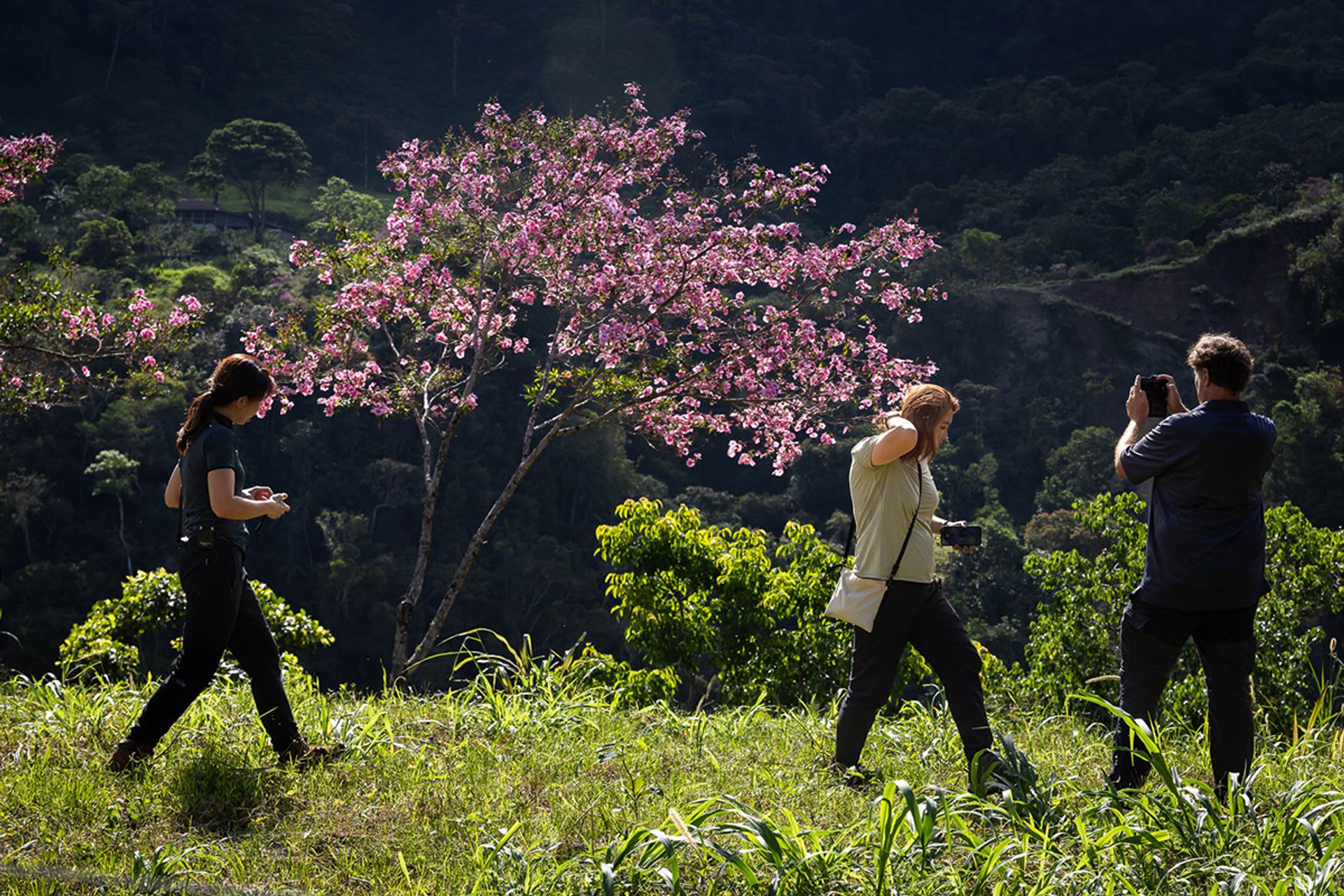
“It’s spectacular and amazing to see it in its natural habitat,” says Ms Clarice Xue (bottom left), senior specialist of arboriculture at the Gardens, who had received a picture of the plants about two months ago from Mr Jose Portilla (bottom right).
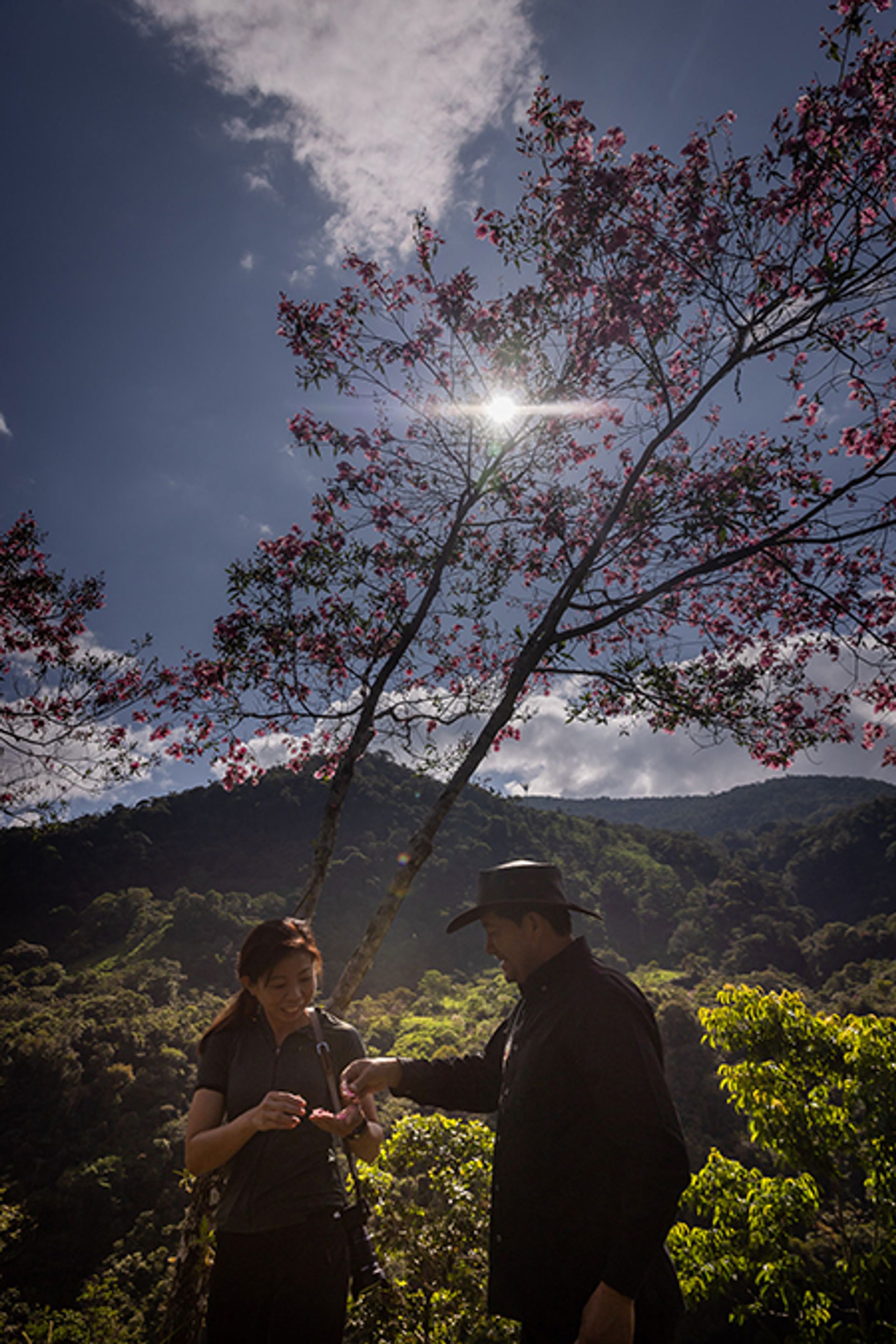
Mr Portilla is the president and founder of Ecuagenera, an Ecuadorian plant company that has several nurseries throughout the country and has worked with Gardens by the Bay for more than a decade.
The spot that the team is at is where Mr Portilla first stumbled upon the plant while on a drive in end-2019. Intrigued by the species which he had never seen before, he decided to propagate it.
Till now, the species of this plant remains unknown to the Gardens’ horticulturalists even after research.
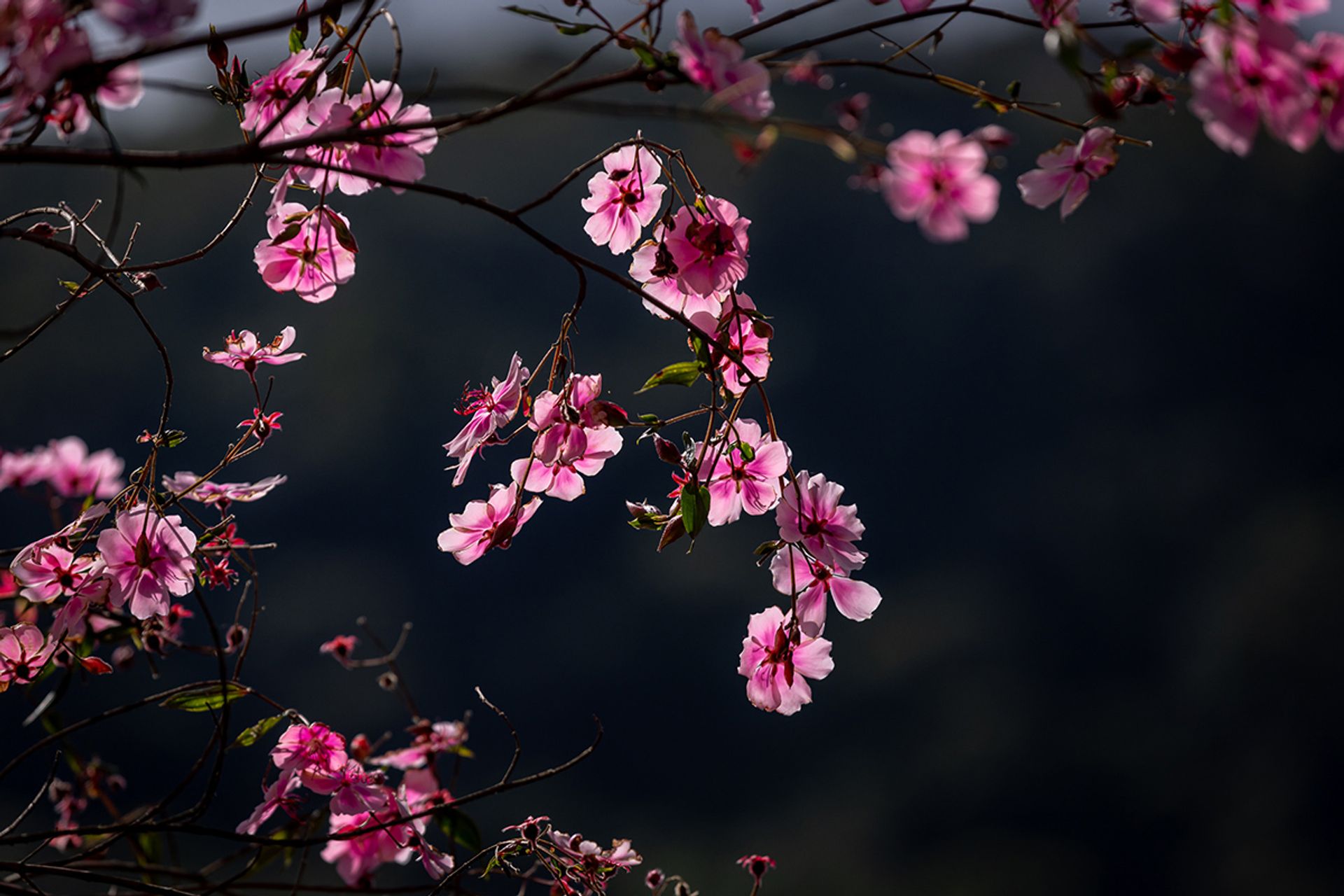
Ms Xue says they believe it is related to the Andesanthus genus, and that the plant should adapt to Singapore as it was found in the tropics.
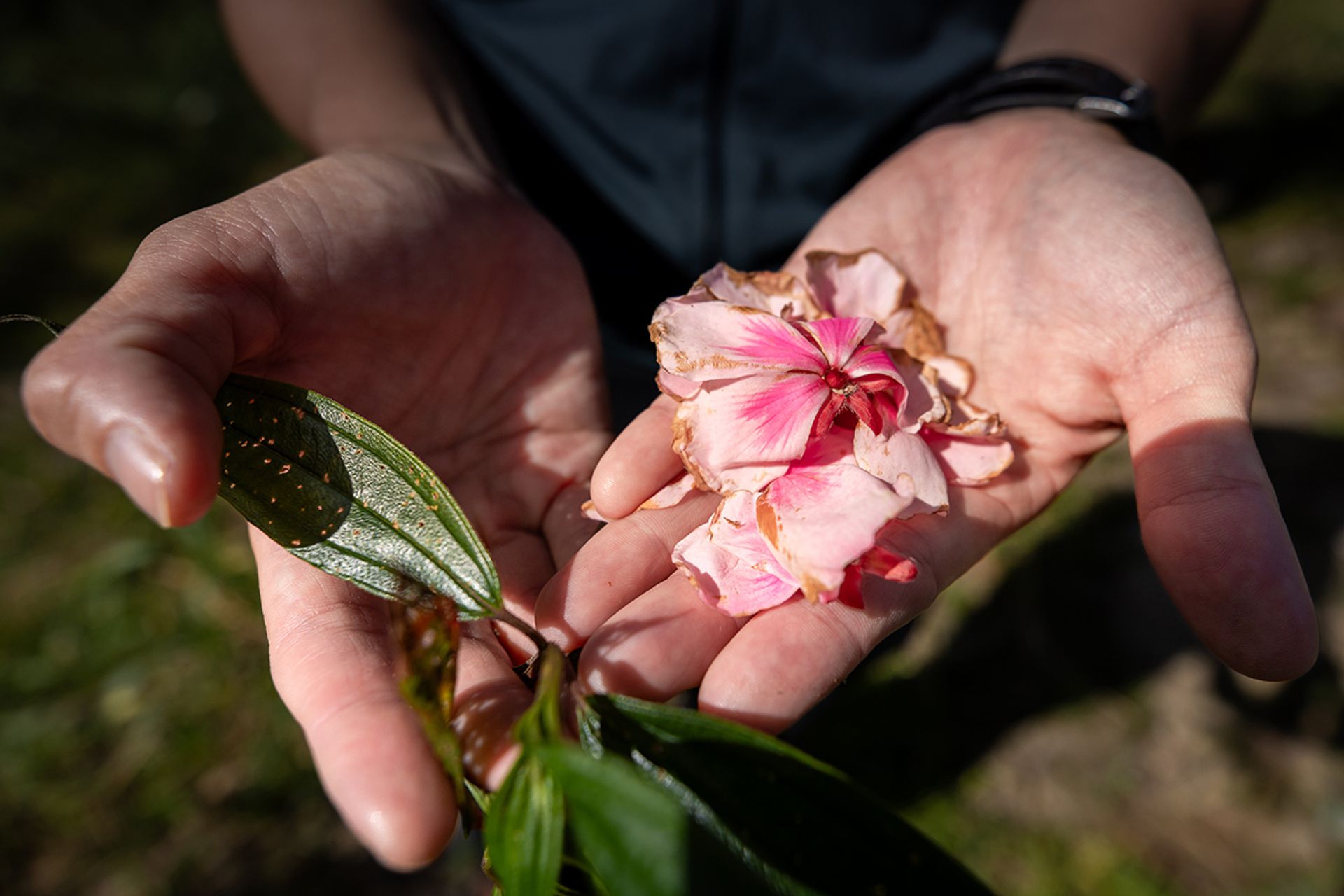
If they bloom, the plant’s eye-catching flowers are likely to be a hit with visitors, she adds – which is why the team wants to have its progenies shipped to Singapore for Bay East Garden.
The upcoming 30.8ha section of the Gardens will house the Founders’ Memorial and is set to open in 2027.
With about four years to go until the opening, the Gardens’ horticulturalists are making trips to various parts of the world, including Latin America, to source for plants that will be used to landscape the garden.
Closer to home, the horticulturalists also procure plants from nurseries in Malaysia and Thailand.
BEAUTIFYING A GARDEN
The plant selection process began in 2021, and Gardens by the Bay expects to bring in up to 700,000 plants for Bay East Garden.
These will join about 700 trees that will be retained on the existing site.
In embarking on this expedition, the Gardens’ staff are taking a leaf out of the book of their predecessors – pioneer horticulturalists who were sent by founding Prime Minister Lee Kuan Yew on similar trips to acquire plants to green and beautify the country’s streets and parks.
In the 1980s and 1990s, officers from the Parks and Recreation Department – which was merged with the National Parks Board in 1996 – visited places such as Brazil, Mauritius, Seychelles, Puerto Rico and Sarawak to collect and exchange plants.
Between 1983 and 1985 alone, 323 species were introduced here, including the Trumpet Tree (Tabebuia rosea), which is native to tropical America. About 15,000 specimens of the species – commonly referred to as “the Singapore Sakura” – dot the island today.
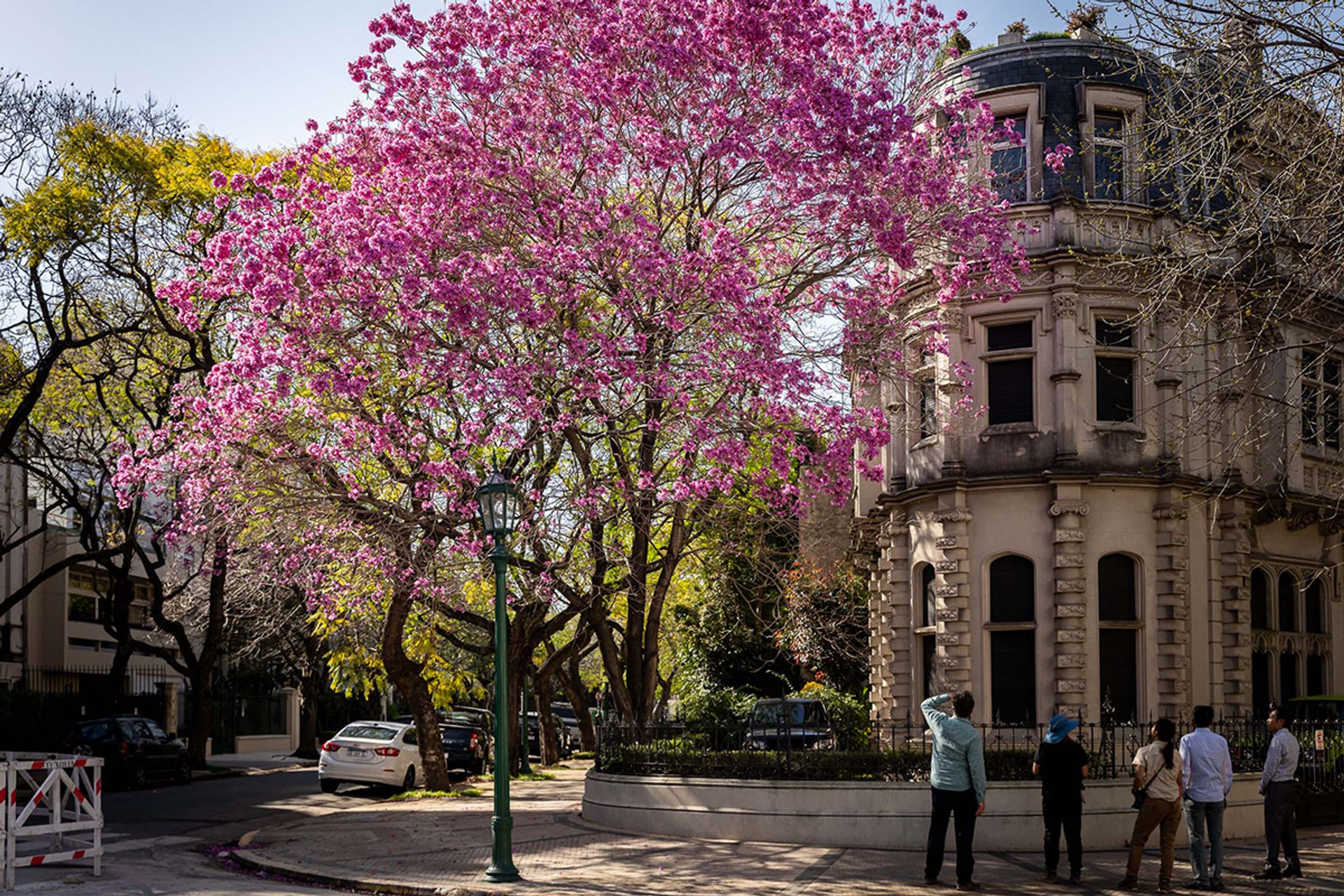
Plants that are now common in Singapore were also introduced prior to independence, such as those of the Bougainvillea genus – brought in by Richard Eric Holttum, director of the Singapore Botanic Gardens from 1925 to 1949.
While it was by happenstance that Mr Portilla came across the “unnamed” plant and offered to supply the Gardens with its progenies, the process of acquiring other plants is generally more deliberately planned.
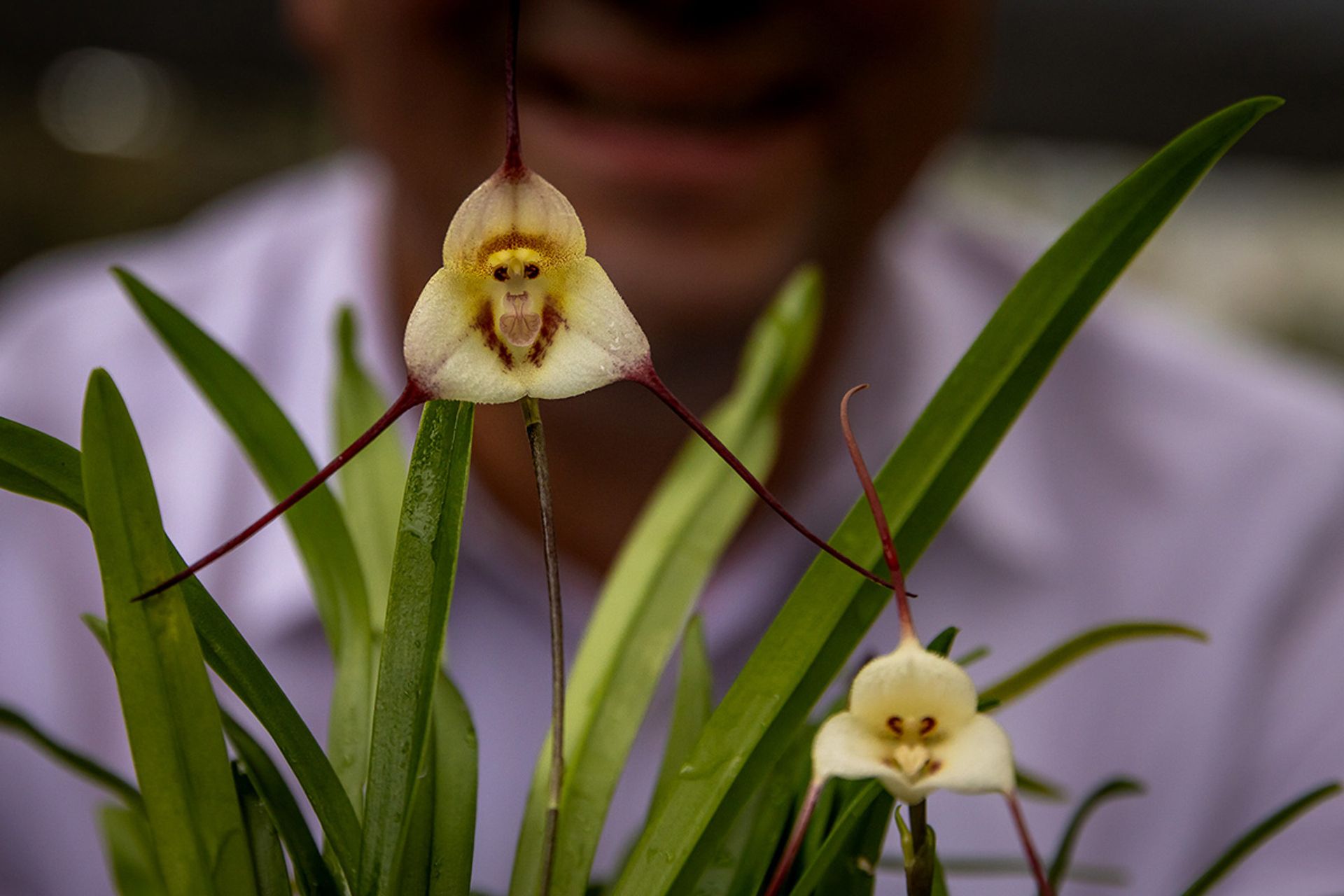
Prior to embarking on plant sourcing trips, Ms Xue and other Gardens by the Bay staff research plants that are available in the areas the team is going to visit.
They then compile several species wish lists, keeping in mind what individual suppliers are likely to find based on where they operate, with a focus on native plants. On occasions when the suppliers do not have a species in stock, they will source for these species and propagate them, with the goal of eventually shipping the plants to Singapore.
For Mr Portilla, finding some of these species means searching for them in the wild, and returning to forest patches on multiple occasions to collect seeds before he is beaten to them by animals.
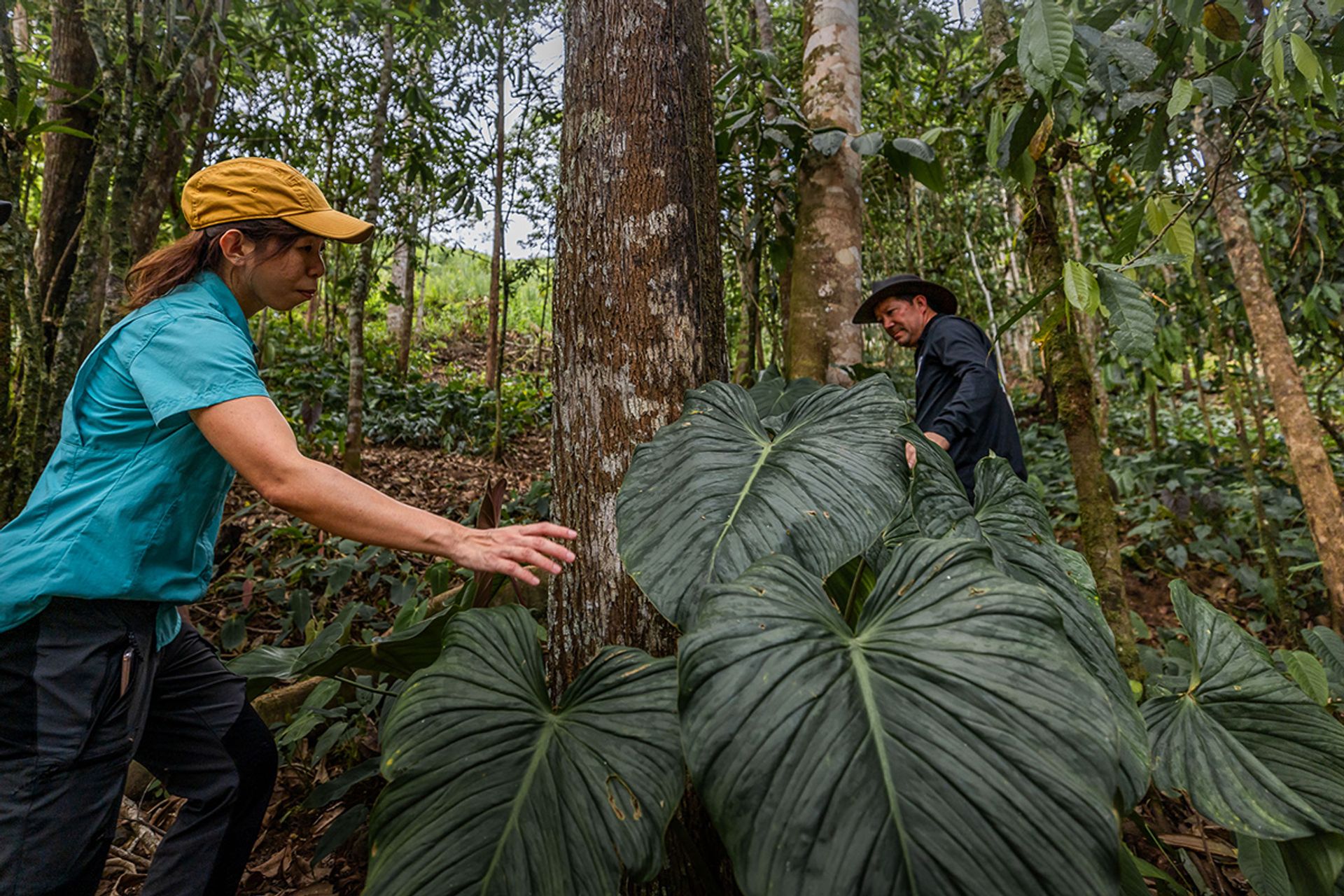
The wish list Mr Portilla received from the Gardens comprised more than 200 species, and Ms Xue estimates that he has found about half of them thus far.
In an Ecuagenera nursery in El Pangui, Ecuador, Ms Xue cannot contain her surprise when she sees how much some progenies have grown since the team last visited in May.
“Oh my god, so fast,” she exclaims, at the sight of a football field-sized area filled with progenies of about 100 species that Mr Portilla’s team is preparing for Gardens by the Bay.
The plants were “babies” and still kept with their parent plants within the nursery when she last saw them.
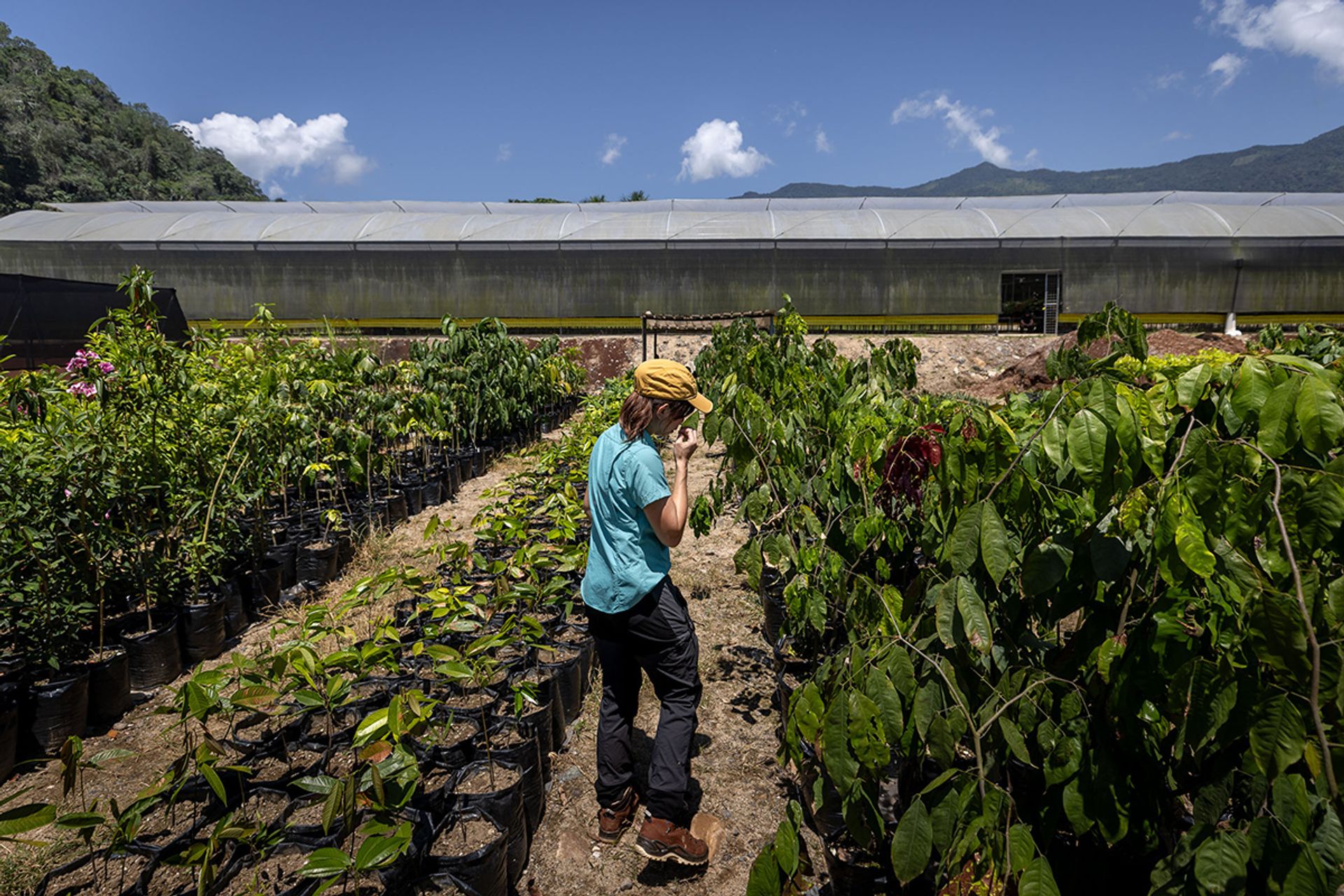
Plants that are picked for Bay East Garden generally fulfil a set of criteria.
Given that the garden will recall Singapore’s greening journey while imagining what the future could be, the team is looking to bring in relatives of species that have been commonly planted in Singapore. These will be new, yet familiar to Singaporeans, says Ms Xue.
They include the Pterocarpus officinalis, a relative of the Angsana (Pterocarpus indicus), which has been used throughout Singapore to give shade.
Ms Xue says the team intends to introduce the Pterocarpus officinalis to Singapore as a substitute for the country’s existing crop of Angsana trees.
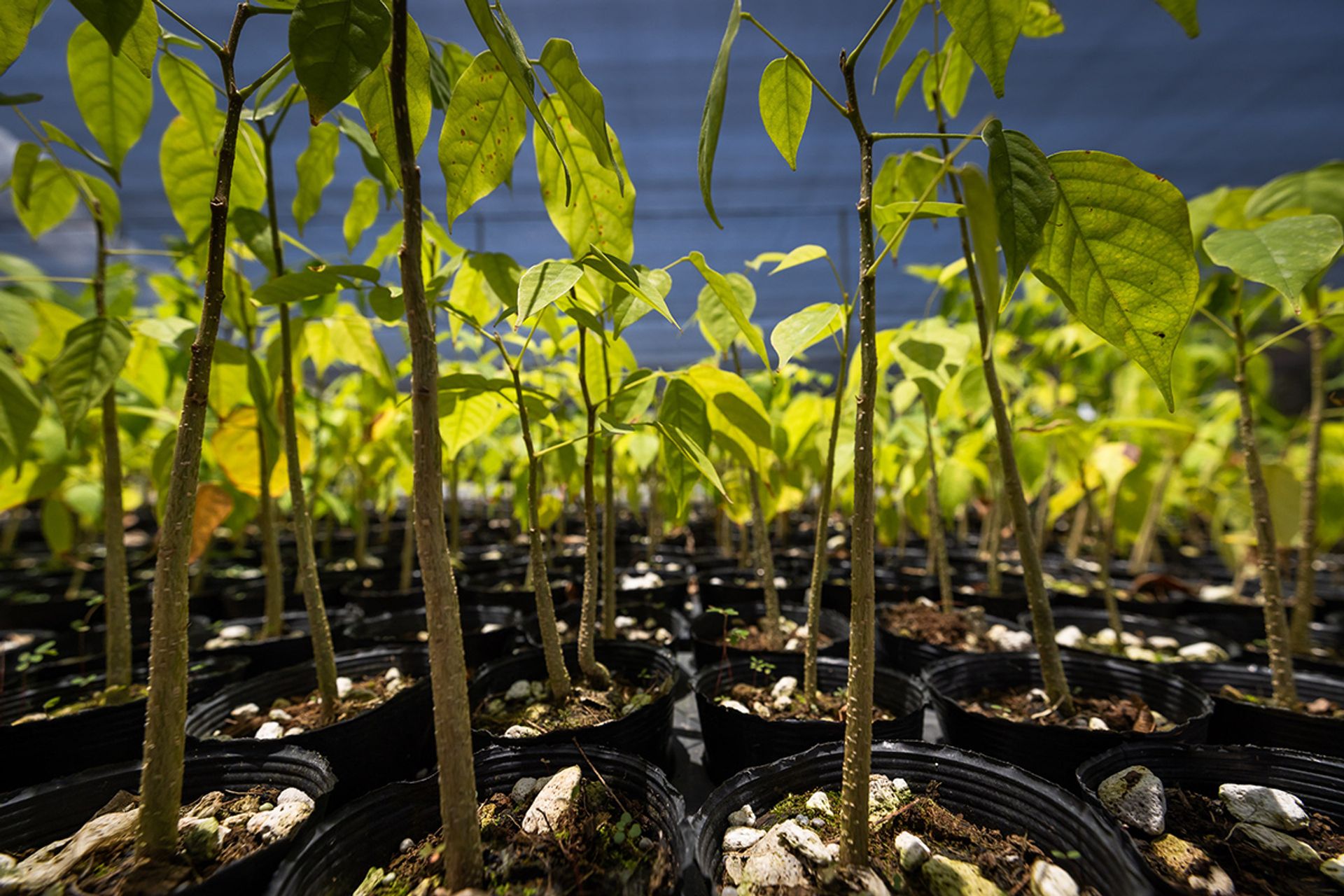
They hope the new species will be hardier and live longer than the Angsanas, many of which have been plagued by Fusarium wilt, a fungal disease.
She says these trees do well near coastal areas, and could be planted near or as part of the upcoming garden’s mangrove habitats.
Another variant that Gardens by the Bay hopes to introduce to Singapore is a species of Bougainvillea with orange-coloured bracts – the leaf-like structures that surround flowers and give the plant its distinct colour.
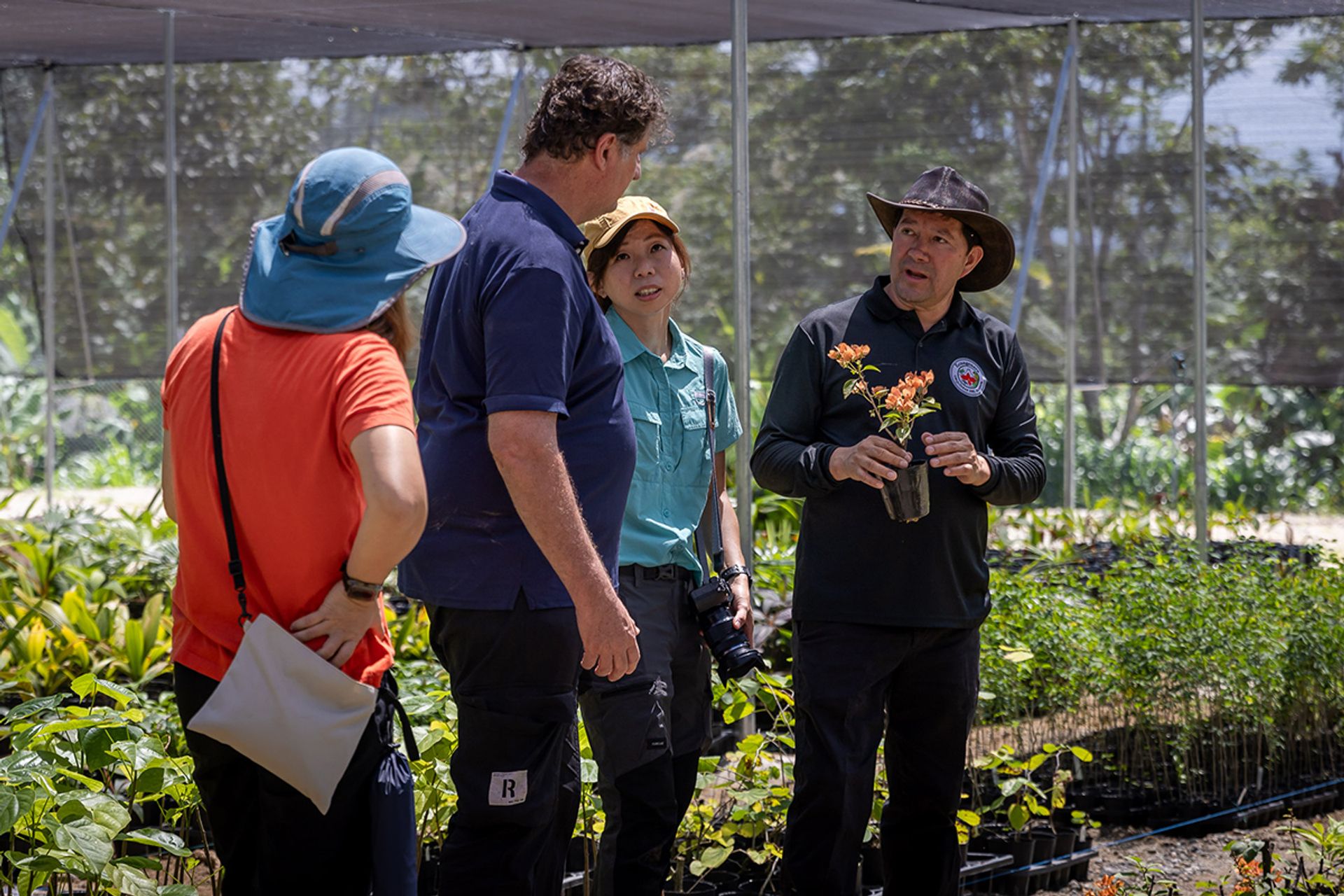
Ms Xue says the Bougainvillea genus holds an important place in the hearts of Singaporeans as the plants are ubiquitous on the island. They are typically used to soften the look of hard infrastructure such as pedestrian overhead bridges.
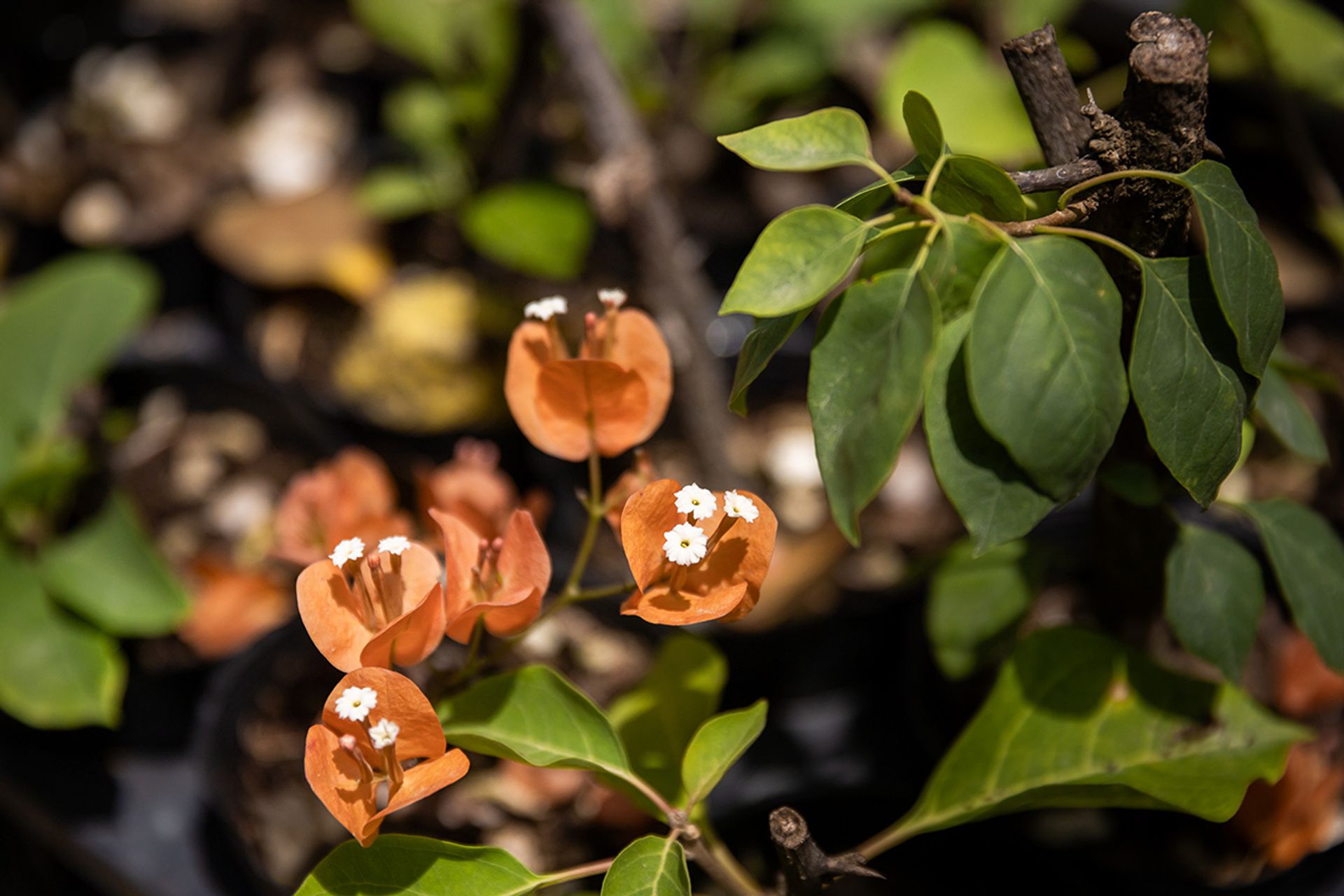
While there are Bougainvillea plants with orange bracts in Singapore – often as a result of human intervention – they are not common in the wild, where this particular species was found in south-west Ecuador.
Besides familiarity, species are also chosen based on their aesthetics and how they will contribute to Bay East Garden’s look and feel alongside other plants.
Ms Xue likens landscaping a garden to composing music.
MAKING MUSIC
Just as each note comes together to form a melody, each plant’s traits have to be considered in the context of the landscape they will be a part of, she says.
For instance, shrubs that are heavily reliant on sunlight will not be placed beneath trees that provide significant canopy cover.
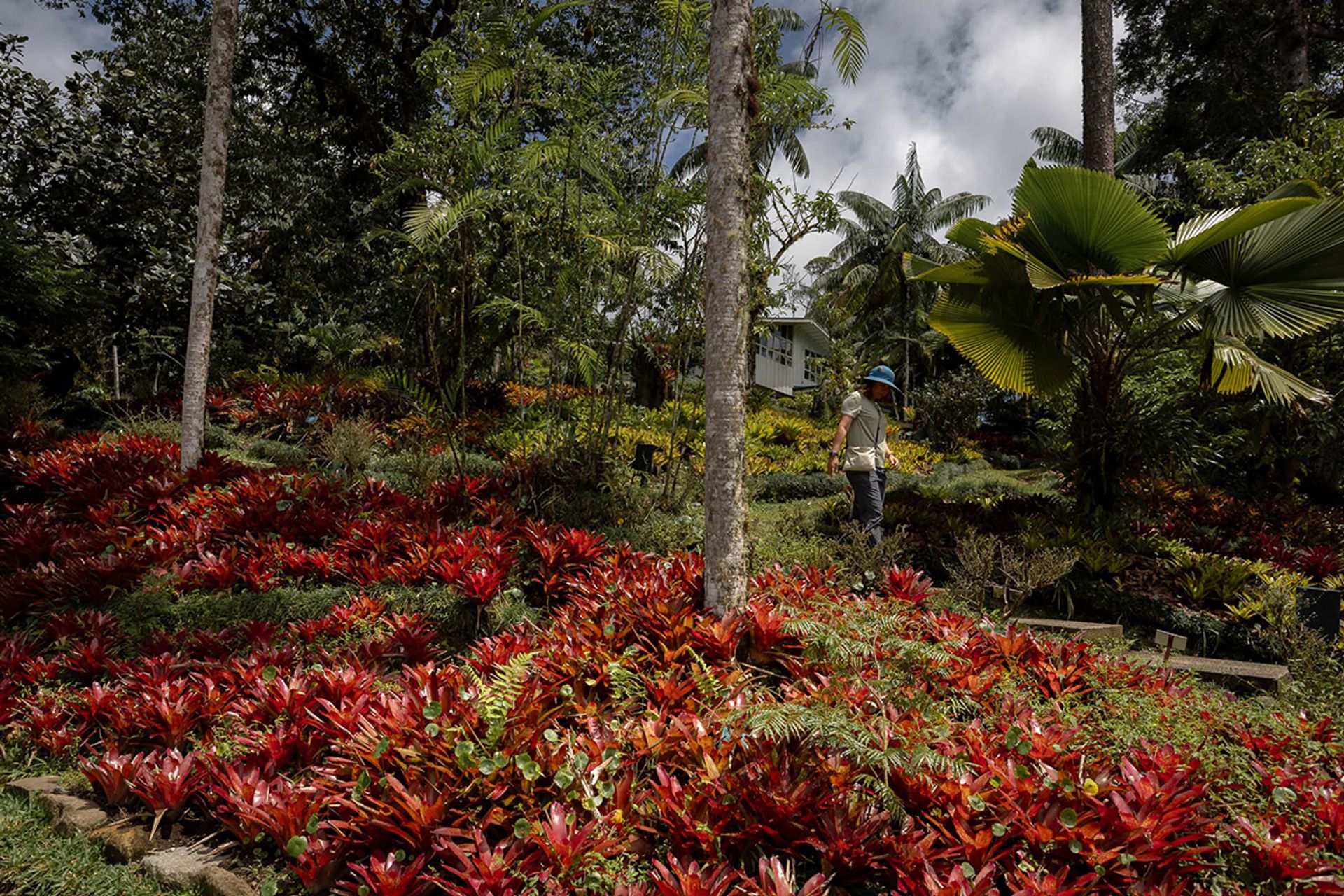
The role that plants play in bringing across narratives is also considered, she adds.
Pointing to Anacardium excelsum saplings – a plant commonly known as the wild cashew – Mr Anton Steven van der Schans, Gardens by the Bay’s principal horticulturalist, says they can grow up to 40m in height and could be planted near the Founders’ Memorial.
“Something that potentially is going to grow into a huge, stately tree in the future might be a nice thing to have in the Founders’ Memorial garden,” he says. “Our founders were giants, and we’ve got some giant trees to go with them too.”
Gardens staff also favour plants that attract wildlife, as well as those that are likely to withstand the effects of climate change such as extreme rainfall and temperatures.
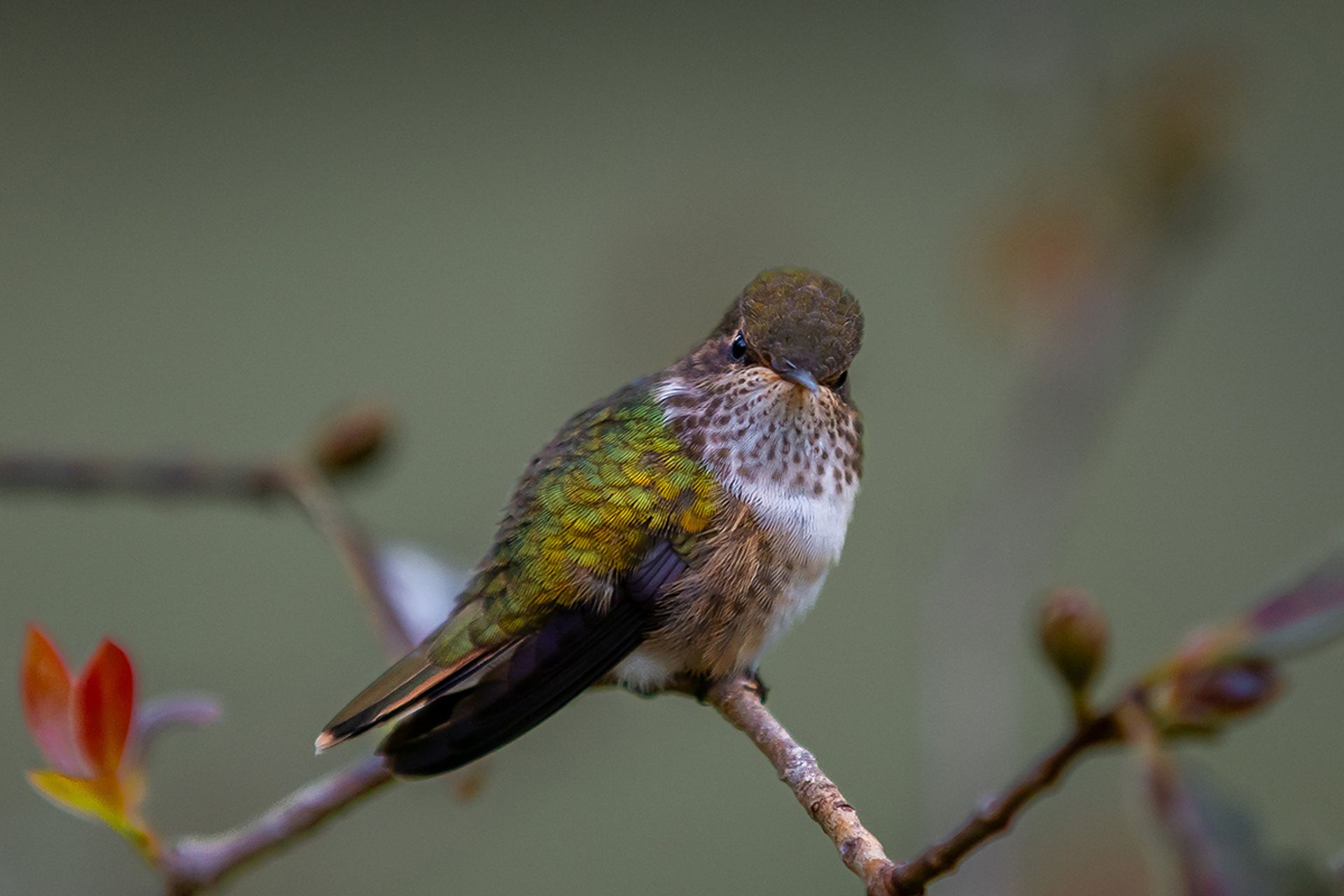
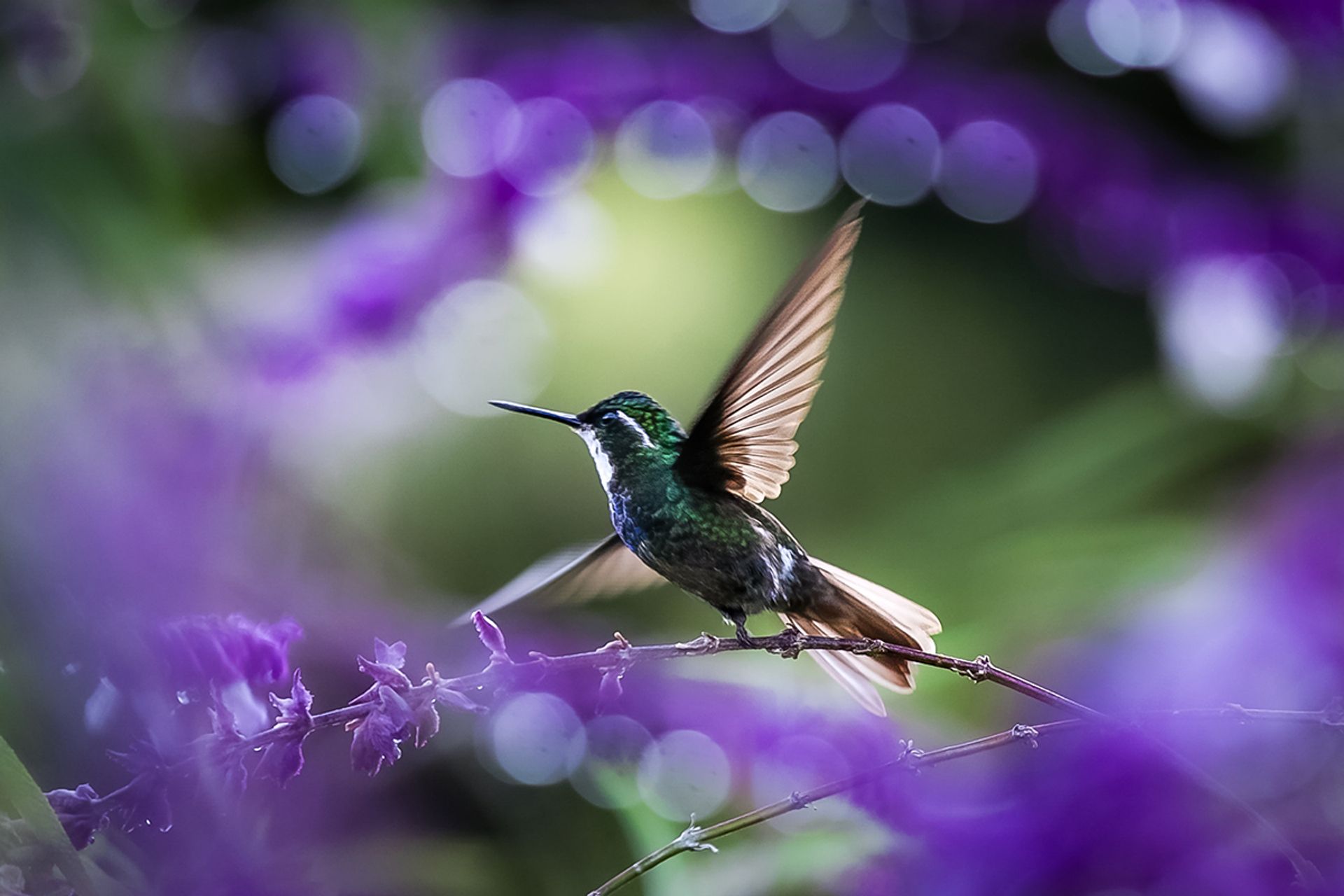
Ms Xue says that while plants can be ordered online, seeing them in person allows her to assess them in various stages of growth.
“A lot of the trees look very different when they are young, their leaves and form will change over time,” she says, adding that horticulturalists will have to factor in these changes over time when deciding how and where to use the plants.
The team hence also utilises the trip to observe mature trees – often found in parks and on the streets in the countries visited.
In Costa Rica’s La Sabana Metropolitan Park, she hugs a mature Terminalia oblonga specimen - one of the species that Gardens by the Bay will introduce to Singapore.
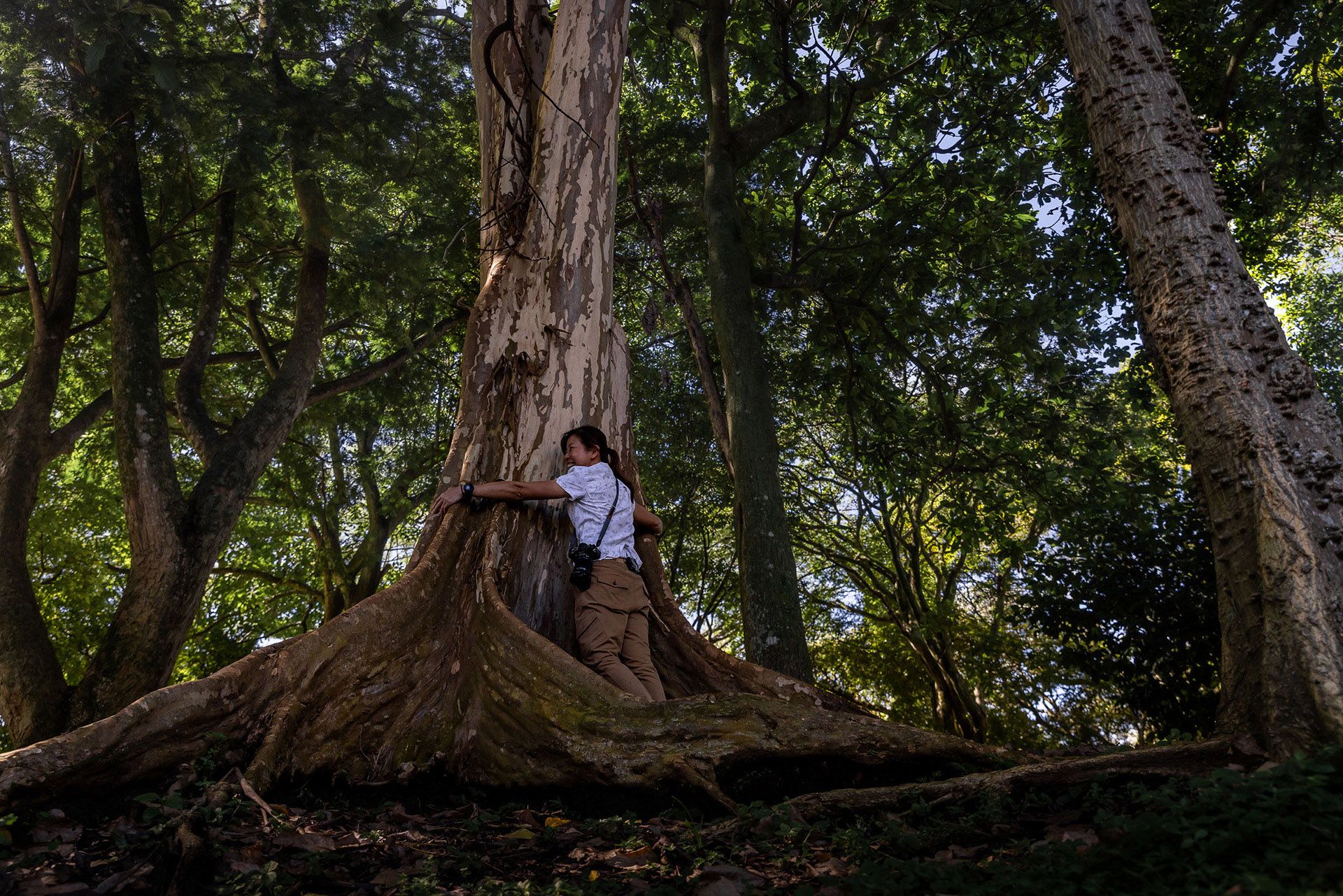
A relative of the Sea Almond (Terminalia catappa), which is native to Singapore as well as other parts of Asia and Australia, the Terminalia oblonga is naturally found in Latin America and can grow up to 35m in height.
It was chosen for its peeling, white bark, says Ms Xue, who adds that the plant is suited to coastal, swampy areas.
As plants bloom in seasons, says Ms Xue, repeat trips are not wasted, as she and her colleagues get to see something different in bloom on each trip.
While a Chionanthus pubescens tree in another of Ecuagenera’s nurseries in Cuenca, Ecuador, was not blooming in May when Ms Xue and her colleagues visited, it is in full bloom this time – its striking pink flowers unmissable amid the foliage surrounding the tree.
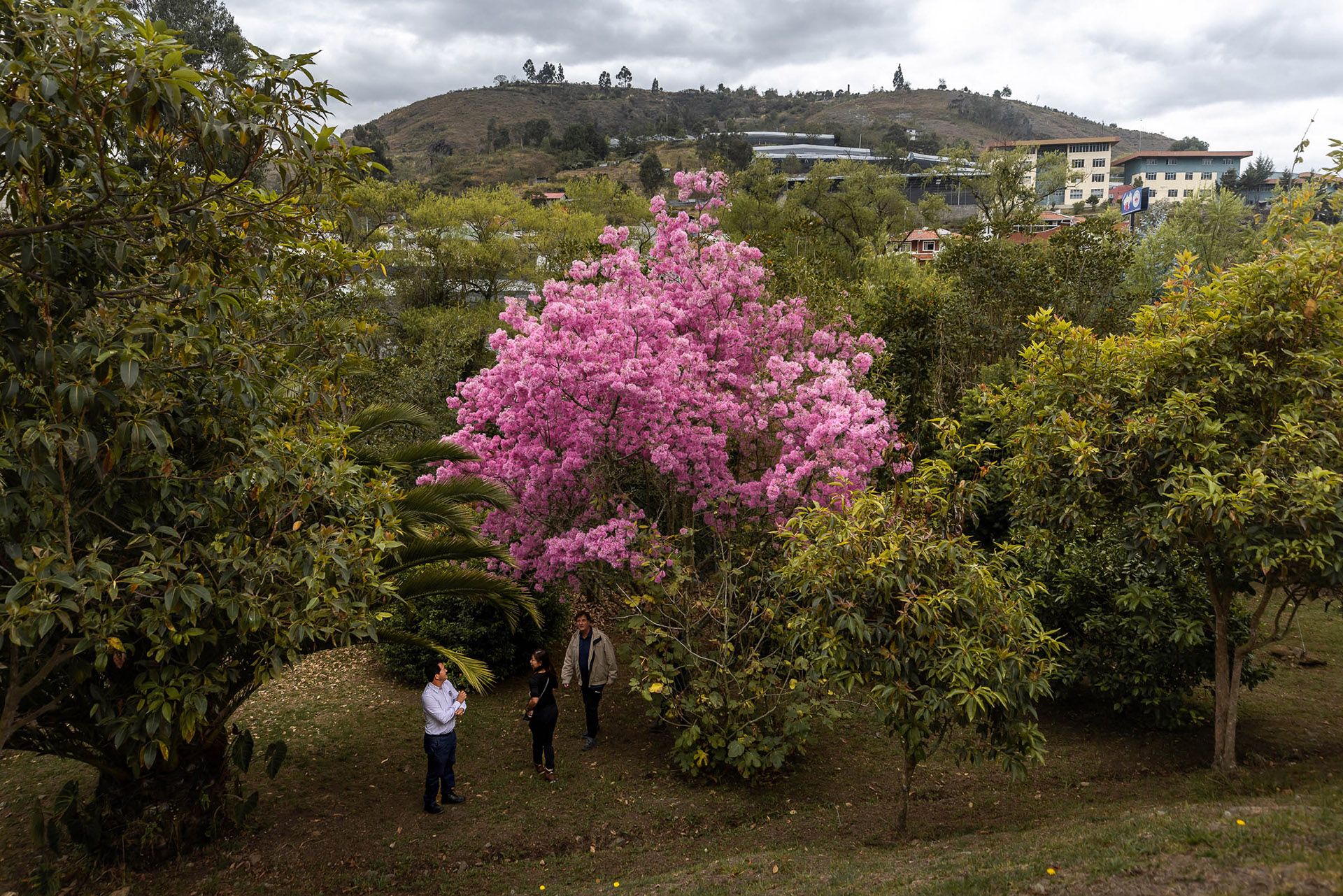
Mr Portilla tells them that the tree flowered after an extended period of dry weather and a drop in temperature, and the team assesses that similar conditions may be achieved in Singapore, when an extended dry spell ends in heavy rain that brings temperatures down.
While the gardens’ team had previously done some research on this species, Ms Xue says they were undecided about purchasing saplings until seeing the plant in full bloom, which convinced them that it would be worth their while trying to make it flower in Singapore.
“It’s an outstanding plant with vibrant flowers that are pleasing to the eye,” she says.
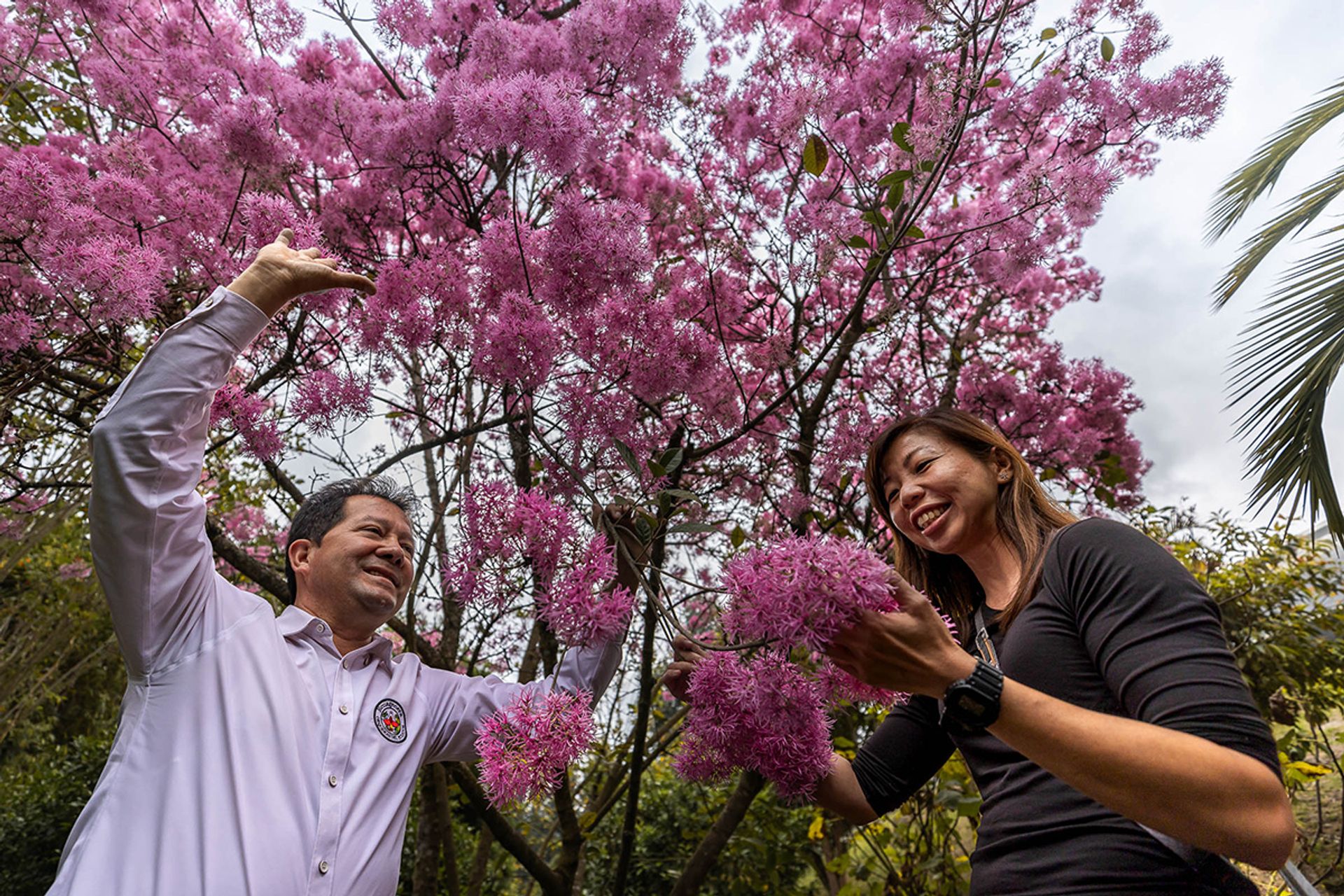
The team heads to the nursery, where they choose about 30 saplings - some likely to yield pink flowers, others white.
Mr Portilla says that in his experience, saplings whose leaves have a reddish tinge bear pink flowers, while those with pale green leaves have white ones.
Ms Xue pulls out a tape measure to record the heights of the chosen saplings so the team can track their growth over time. Besides a mix of flower colours, they consider the form of the plant and the condition of its leaves before picking saplings for purchase.
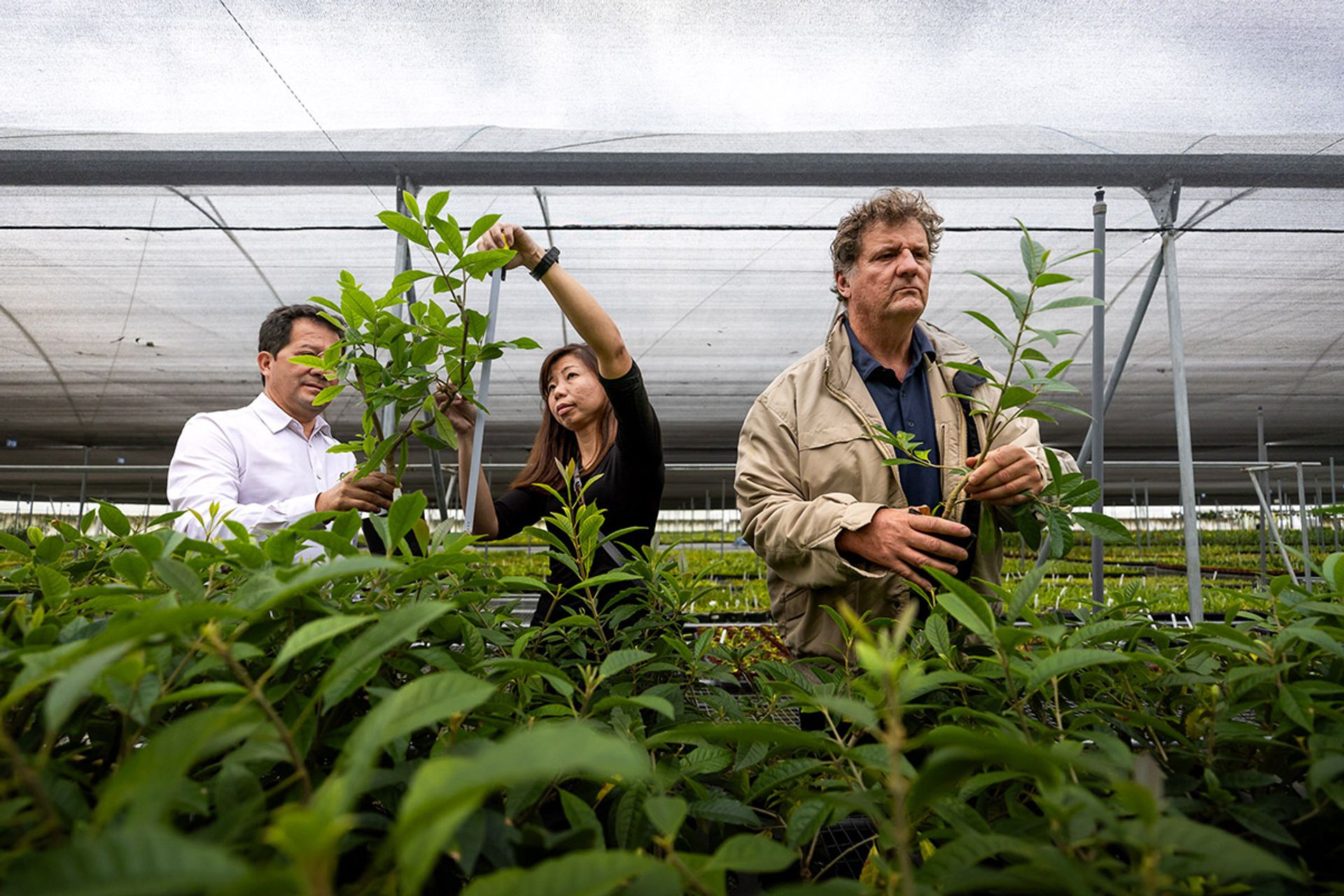
When deciding how many to buy, the team also factors in the possibility that some will not survive the journey to Singapore.
Gardens by the Bay generally does not buy seeds and cuttings, because not all seeds germinate easily, says Ms Xue. Saplings save horticulturalists time and have a higher survival rate.
Depending on the species, some plants are transported to Singapore when they are still seedlings or saplings, as they may be more sensitive to environmental changes when older.
Such plants are more adaptable when they are younger, and have better odds of adjusting to Singapore’s weather, she says.
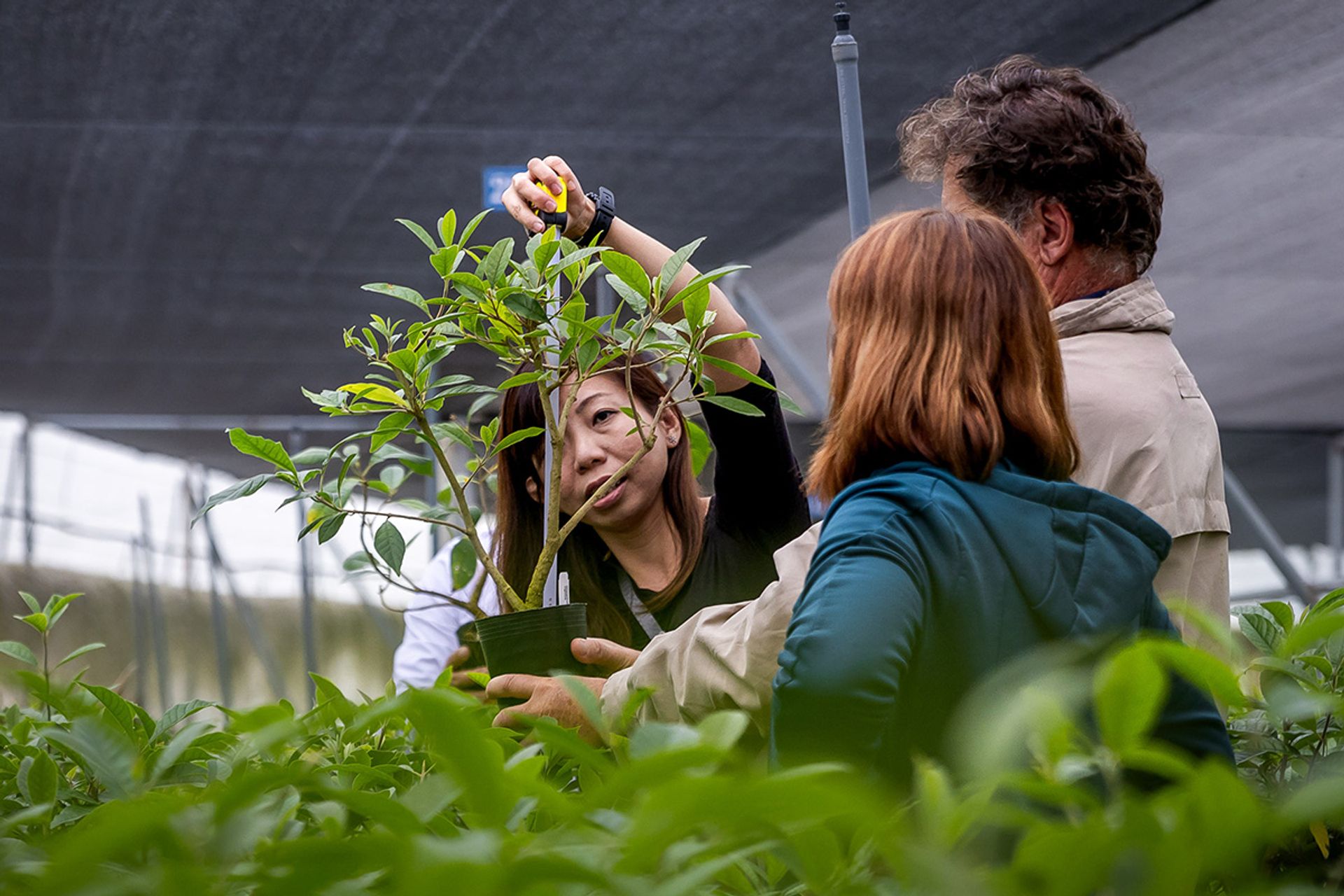
While horticulturalists will not have to wait for trees to grow, Ms Xue says older trees are not always preferred as packing them typically requires significant root cuts that will take the plants a long time to recover from post-arrival.
Besides sourcing for plants, the Gardens team also catches up with their counterparts overseas.
At the Rio de Janeiro Botanical Garden, Ms Xue and Ms Thais Hidalgo, the Brazilian garden’s curator of living collections, discuss how they manage species planted in Singapore and in the garden such as Bougainvillea, Rain Trees (Samanea saman) and Imperial Palms (Roystonea oleracea).
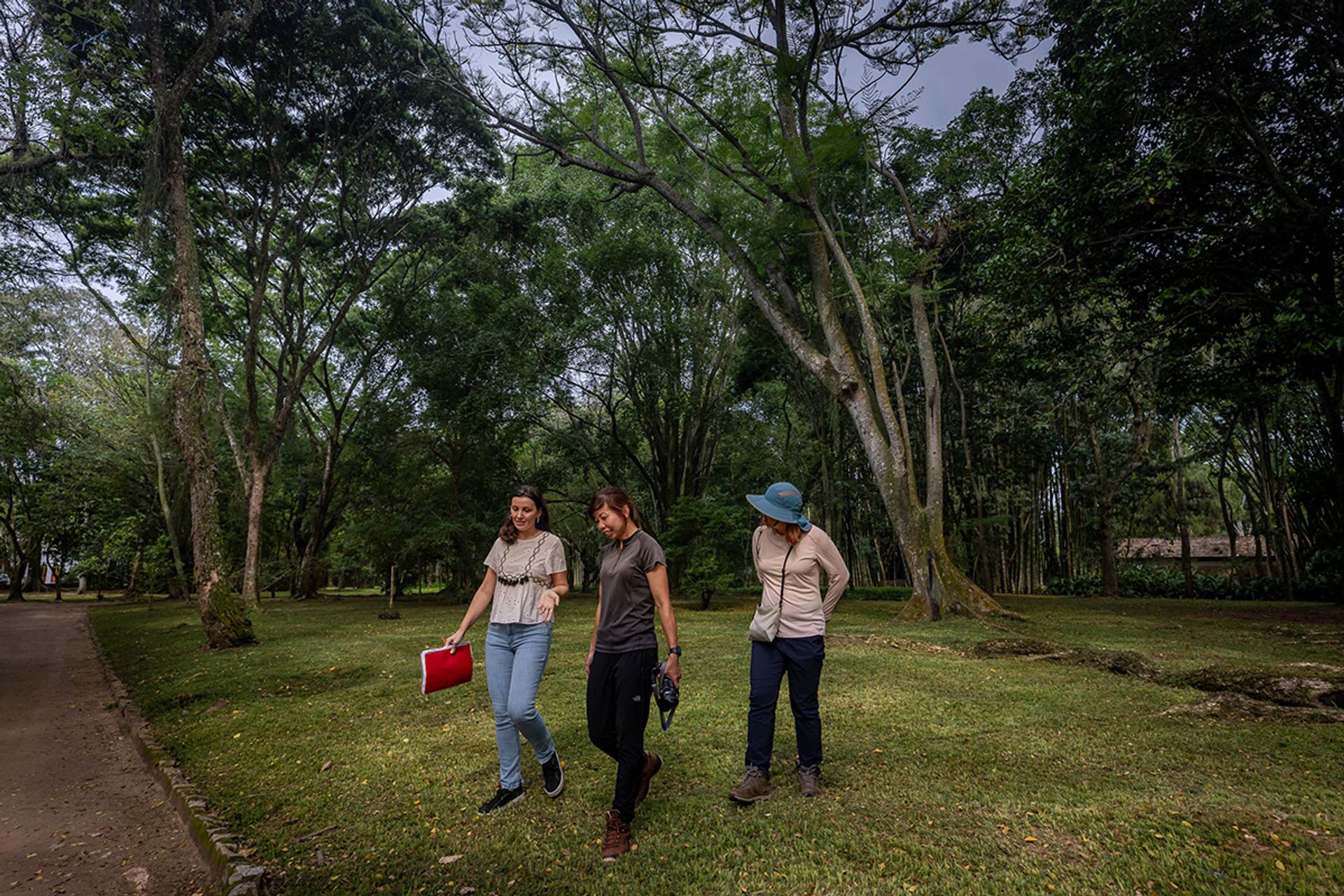
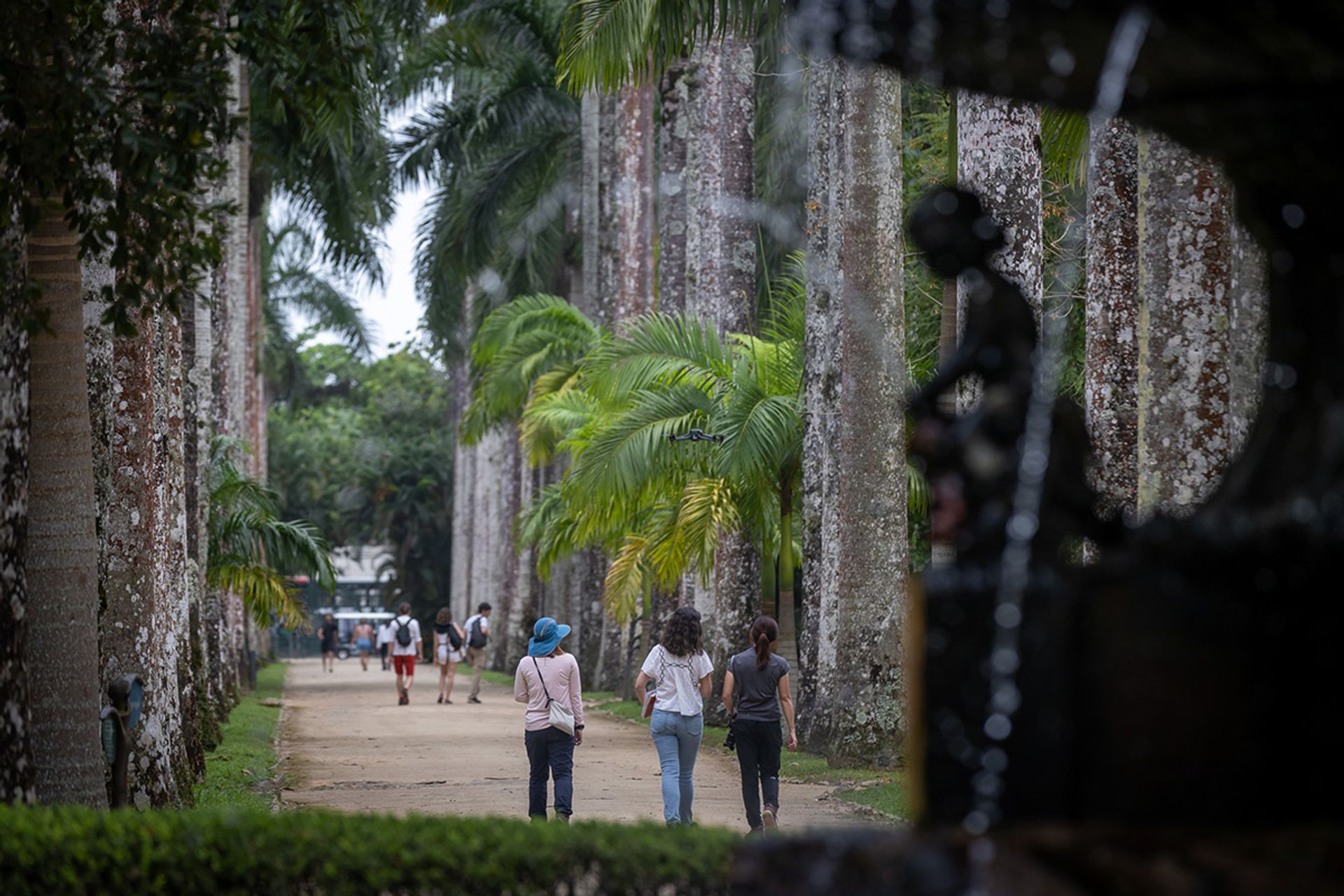
Despite spending most of the trip in nurseries, gardens or nature reserves, the Gardens team never stops looking at plants even outside of these places.
One morning, while almost everyone else had gathered for breakfast, Ms Xue goes across the road from the hotel to document a tree that she had seen from the balcony of her room.
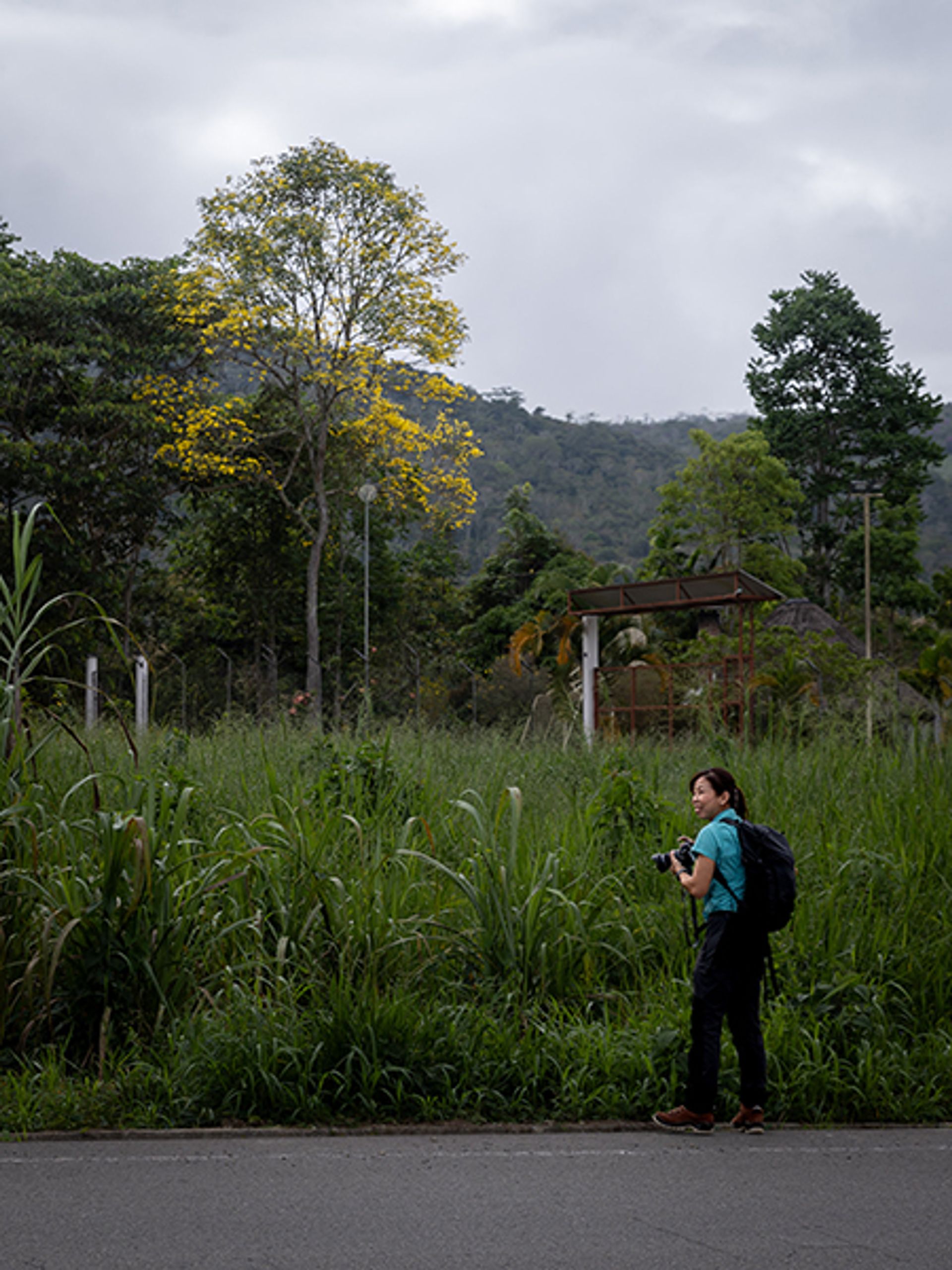
“It’s very exciting… it’s not all the time that we get to see trees in bloom like this, so I came over,” she says.
The tree, of the Handroanthus genus, has trumpet-shaped flowers, and Gardens by the Bay is importing a variant with pink flowers – Handroanthus impetiginosus – from Argentina.
On another occasion, after a long day of travelling and work, the team lingers outside a restaurant after dinner in Lobos, Argentina, to observe light purple Wisteria plants hanging from a trellis.
“It’s one of the few vines that blooms so spectacularly,” says Ms Xue.
“It’s something that you may not see in Singapore, and there’s a seasonality to when it blooms. Even if you return 10 times, you might only see it bloom once – it’s like sighting wildlife.”
Among the Gardens by the Bay team – which also includes Gardens chief executive Felix Loh, Bay East Project Office senior director Heng Whoo Kiat and senior manager of conservatory operations Lee Xiaoyi – Mr van der Schans’ plant expertise stands out.
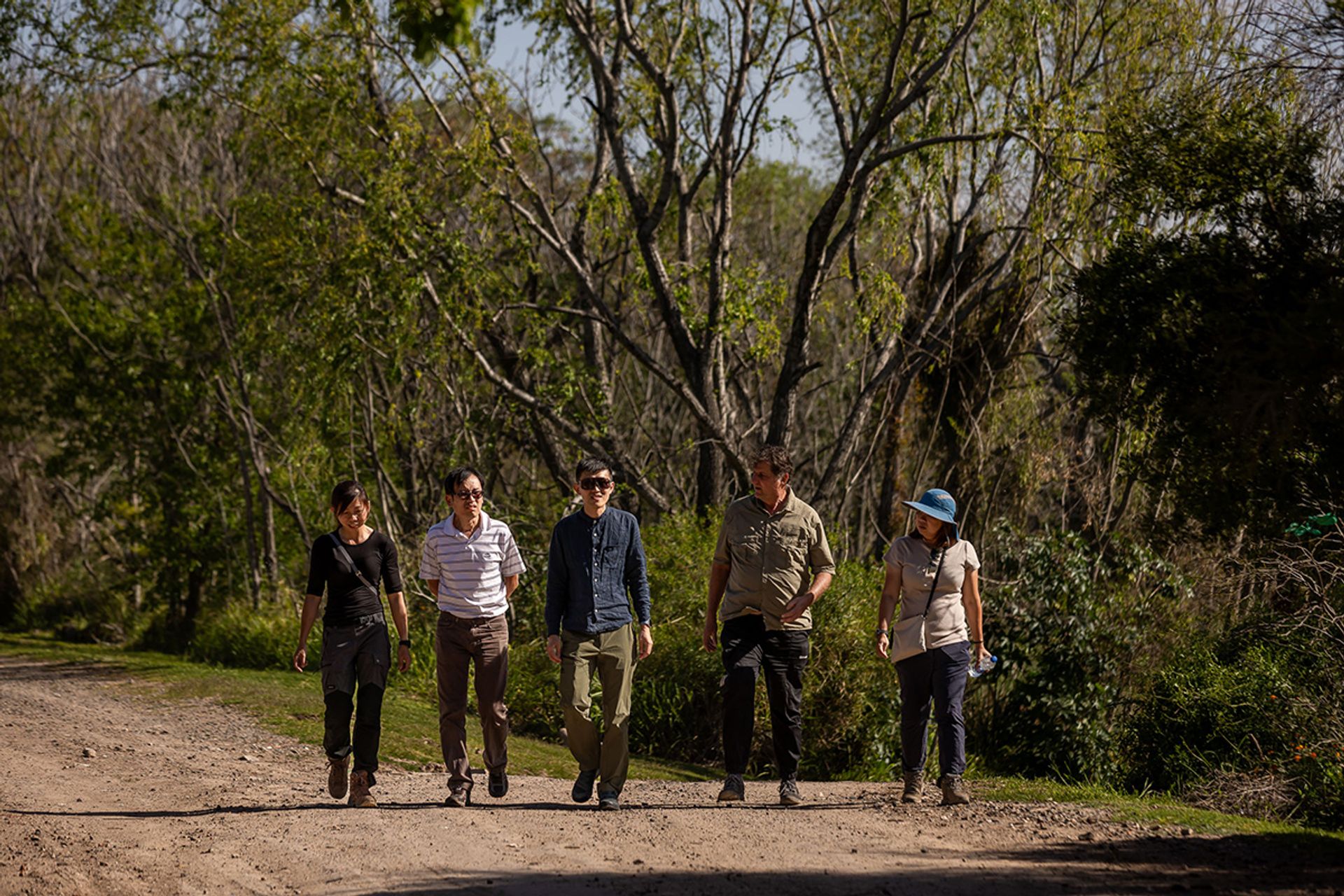
The passion the Gardens’ principal horticulturalist has for his work is evident every day of the trip.
He spends even the shortest lull periods looking at plants around him and on trips like this, is known to wander away from the group while looking at plants – carried away by his obsession with the organisms.
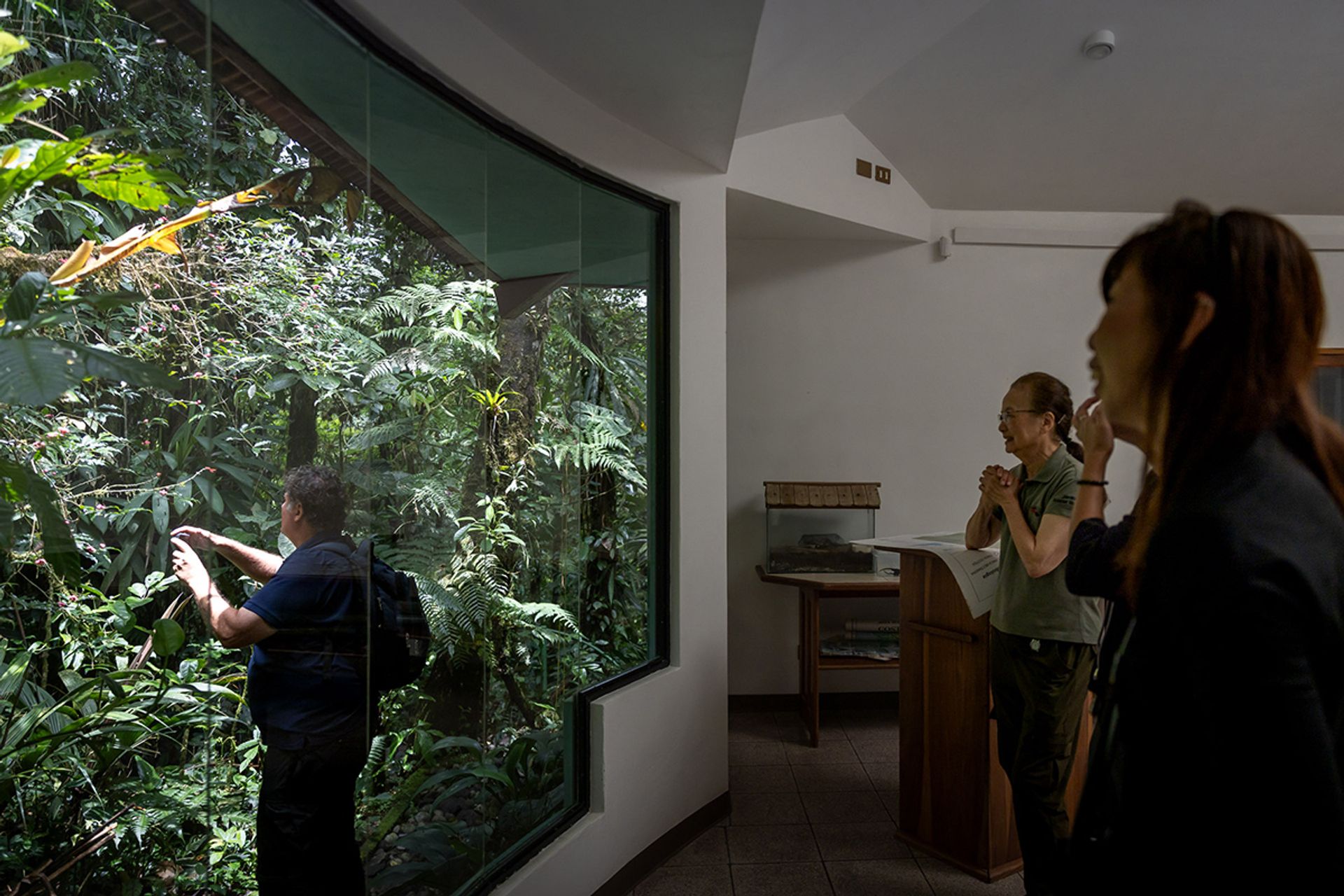
Colleagues describe Mr van der Schans as a walking plant encyclopedia, and his extensive knowledge comes in handy when decisions on plant acquisitions need to be made.
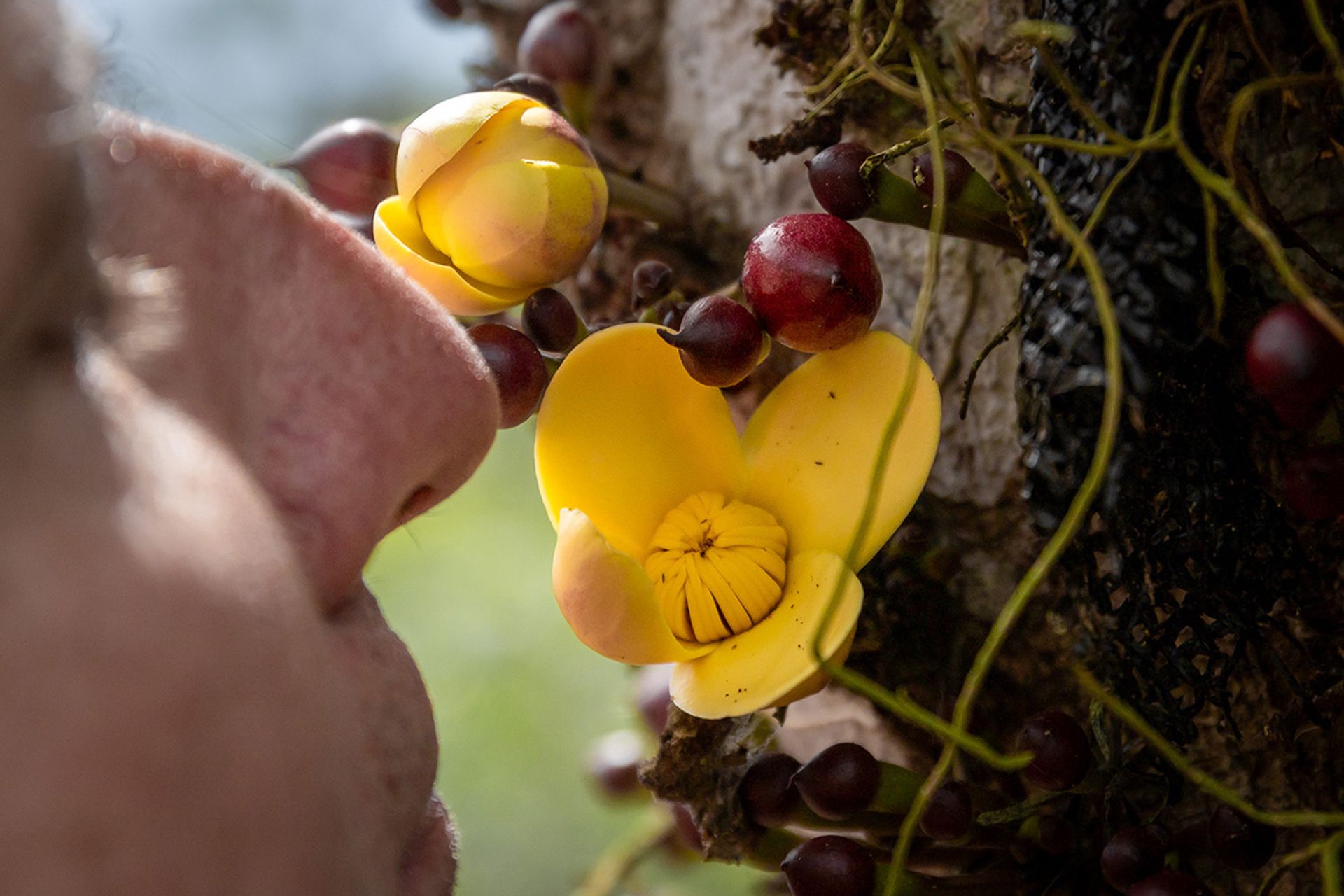
While walking the grounds of Lobos Nursery in Argentina’s Buenos Aires province, Mr Loh seeks Mr van der Schans’ counsel each time they stop at a plant of interest.
Looking at some Vachellia caven plants – their vivid yellow flowers in full bloom – Mr Loh turns to Mr van der Schans for advice: “How, Anton? Should we take five?”
“I don’t know if it’s going to work for us,” says Mr van der Schans, citing the lack of a winter season in Singapore, which is likely needed to trigger flowering in this species. “And if it’s not going to flower, it will just be another spiny green tree.”
“What a pity,” replies Mr Loh, who is himself a horticulturalist by training.
Another species that catches Mr Loh’s eye is the Robinia pseudoacacia ‘Frisia’, which has golden leaves that he hopes will help recreate autumn colours in the gardens.
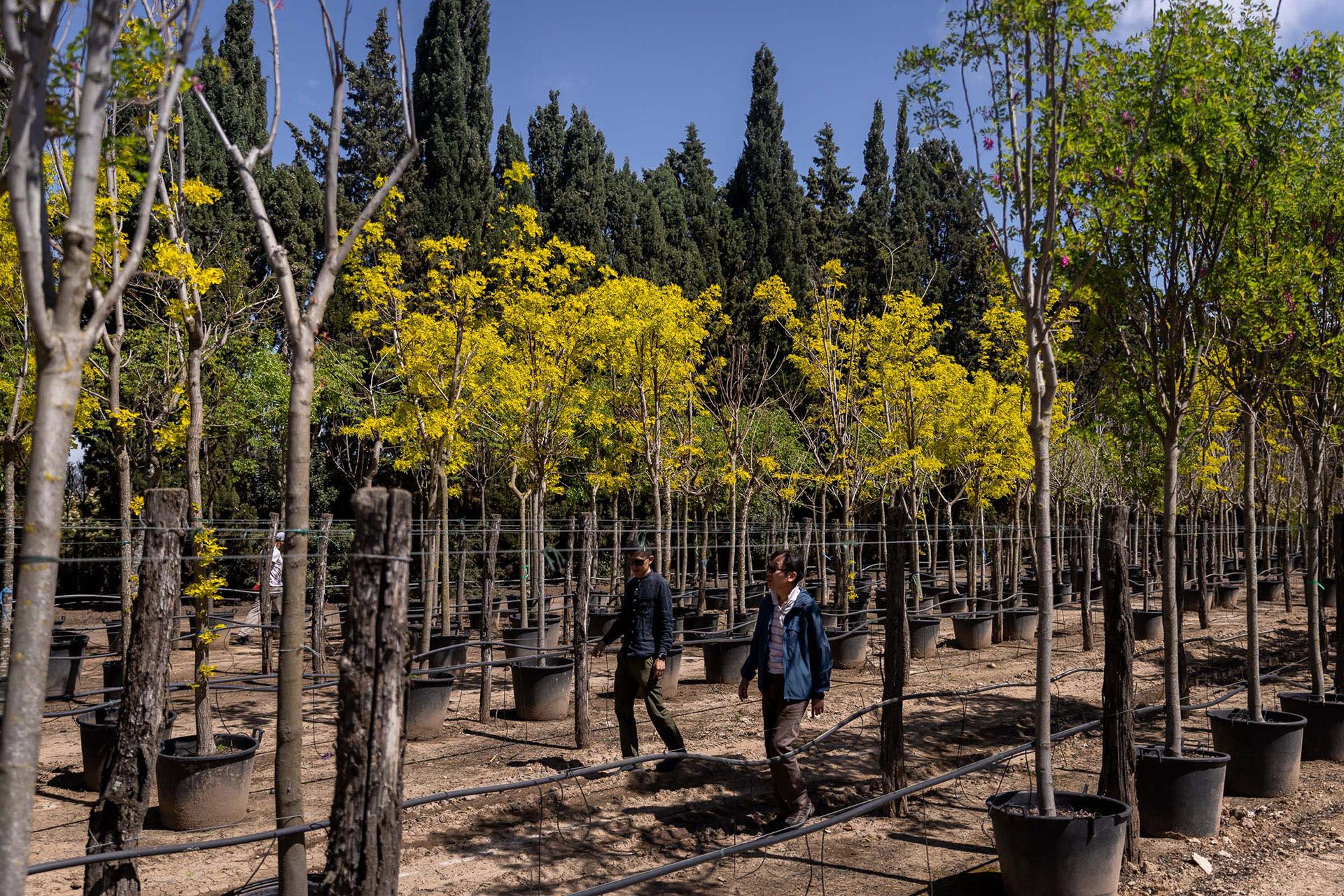
While larger specimens are available, Mr van der Schans opts for smaller ones.
“Try the five smaller ones and see how they perform first, and if they perform well we can try the bigger ones – otherwise I don’t think it’s worth it,” he says, adding that there is only a 20 per cent chance the leaves will stay gold in Singapore.
Mr Loh says: “You’ve got to try, sometimes you succeed, sometimes you don’t.”
This species could be used along an avenue in Bay East Garden, he adds.
Mr Loh ties purple tape around some specimens to indicate that these have been selected for purchase.
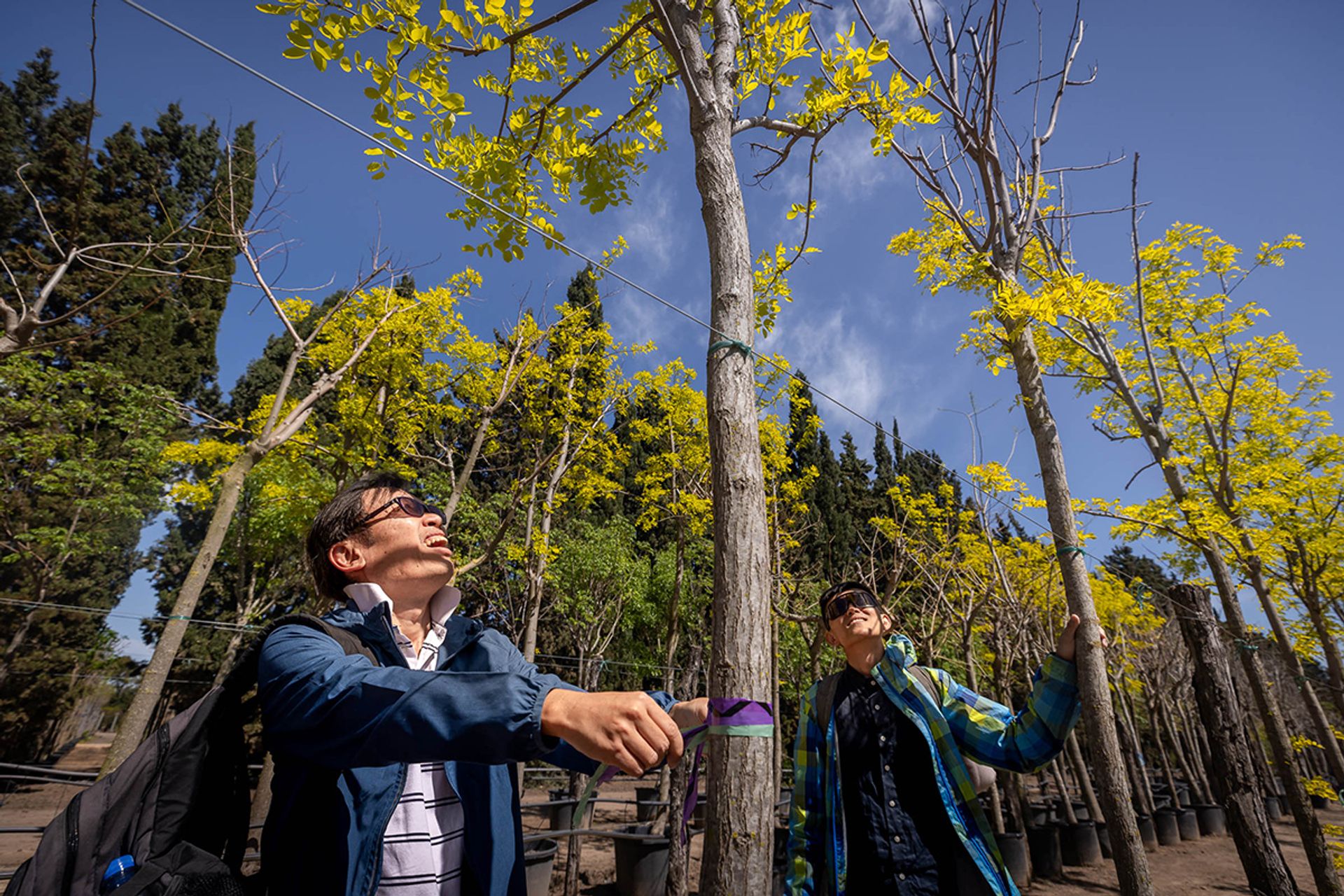
Elsewhere in the nursery, 35 trees are being loaded into an open-top container using an excavator with a lifting hook on its end.

The trees, which are about 3 to 7m tall and aged between 12 and 30 years old, have gone through a series of preparations for shipment.
About a year ago, they were removed from the ground and potted to allow their roots to be entwined in a ball-like shape for easy transportation.
SHIPMENT PREPARATIONS
In the days leading up to their shipment, the leaves of the trees were trimmed to reduce transpiration during transit and prevent dehydration.
The trees were also removed from the pots, and had their root balls wrapped in cling wrap to keep them intact.
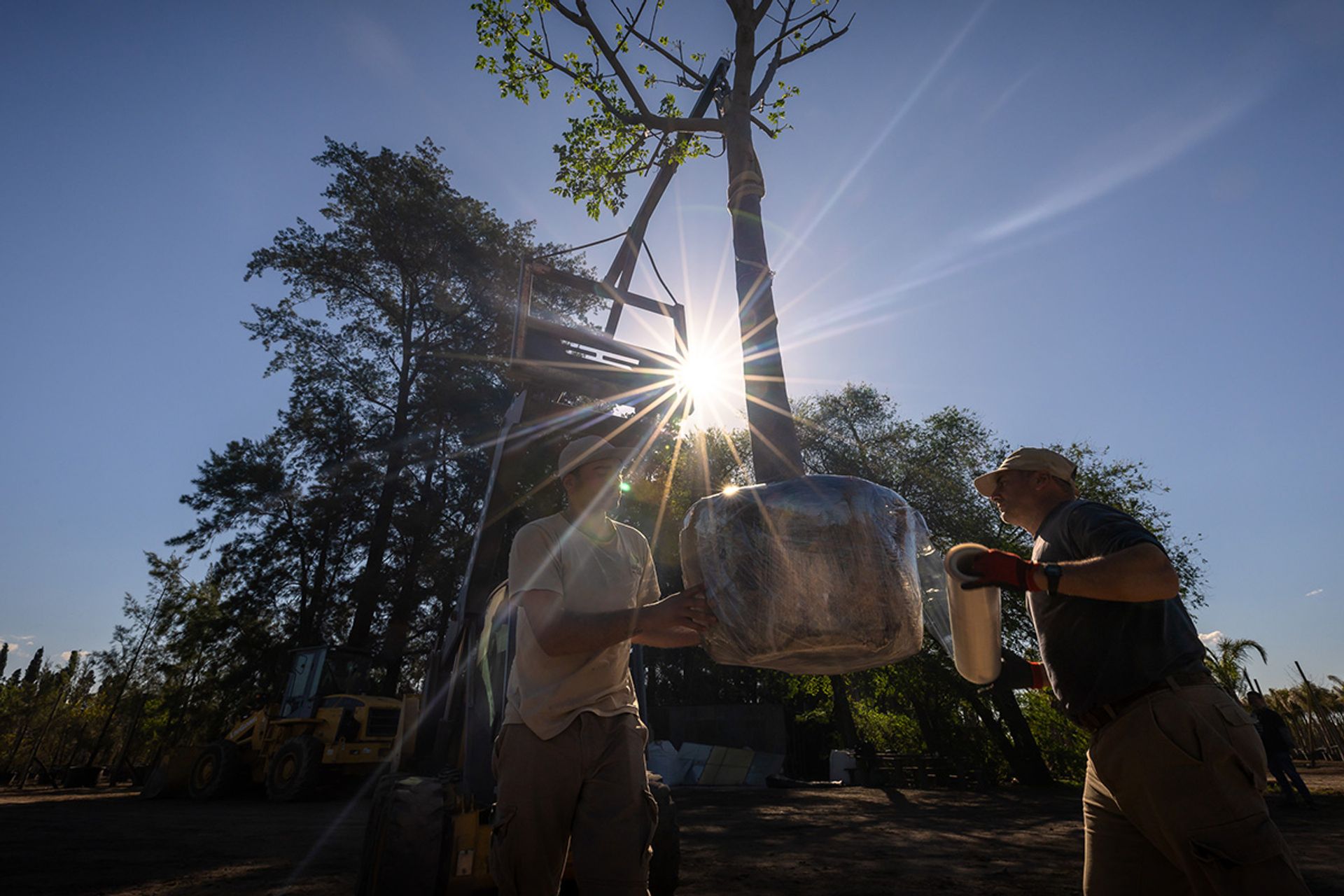
Before wrapping the root ball entirely, workers pour a hydrating gel into it. The gel will slowly release moisture to the roots to nourish the plant for the time it will spend at sea, which is roughly 50 days.
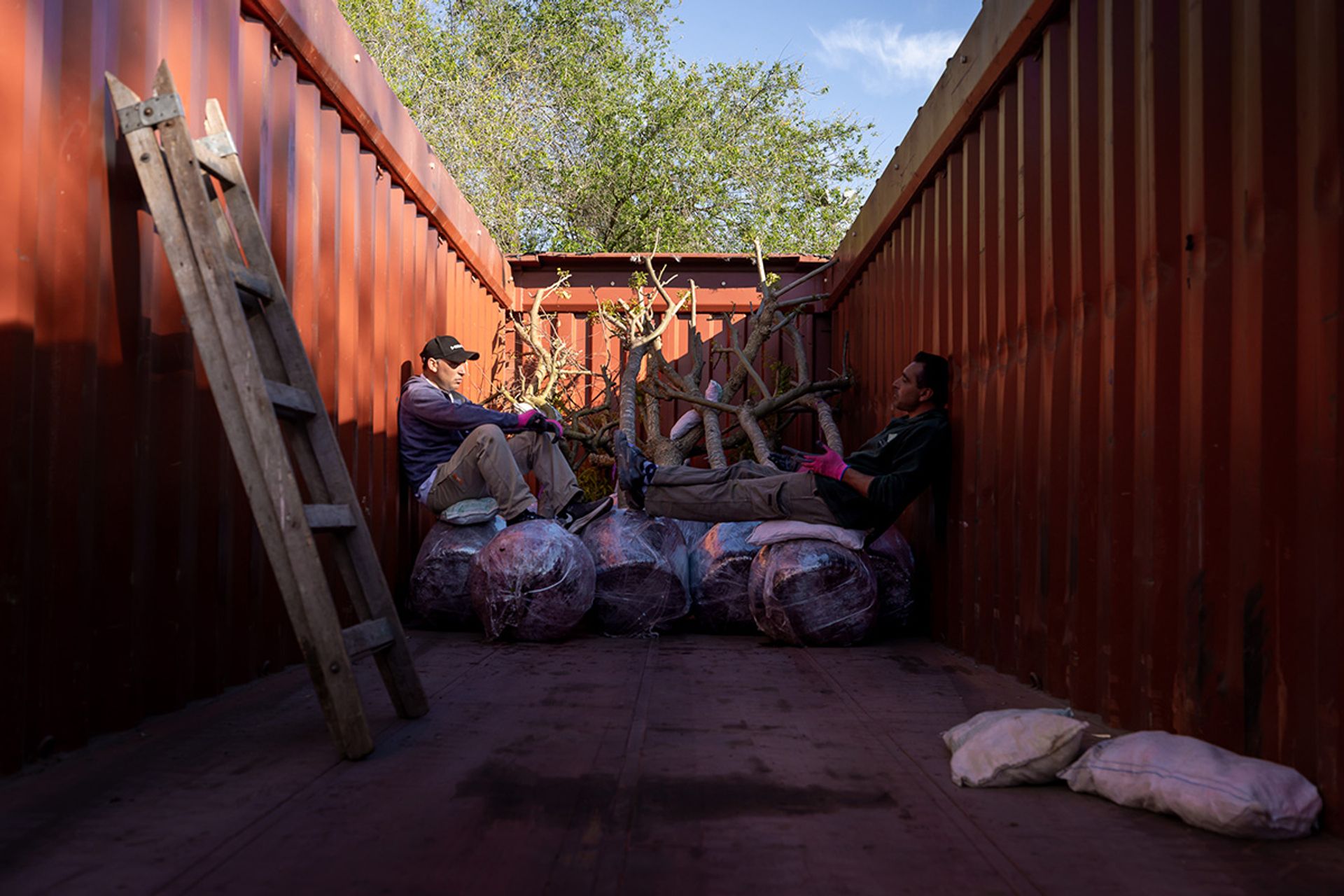
Trees are generally shipped during cooler seasons when the plants are dormant, to minimise the transplanting shock they receive.
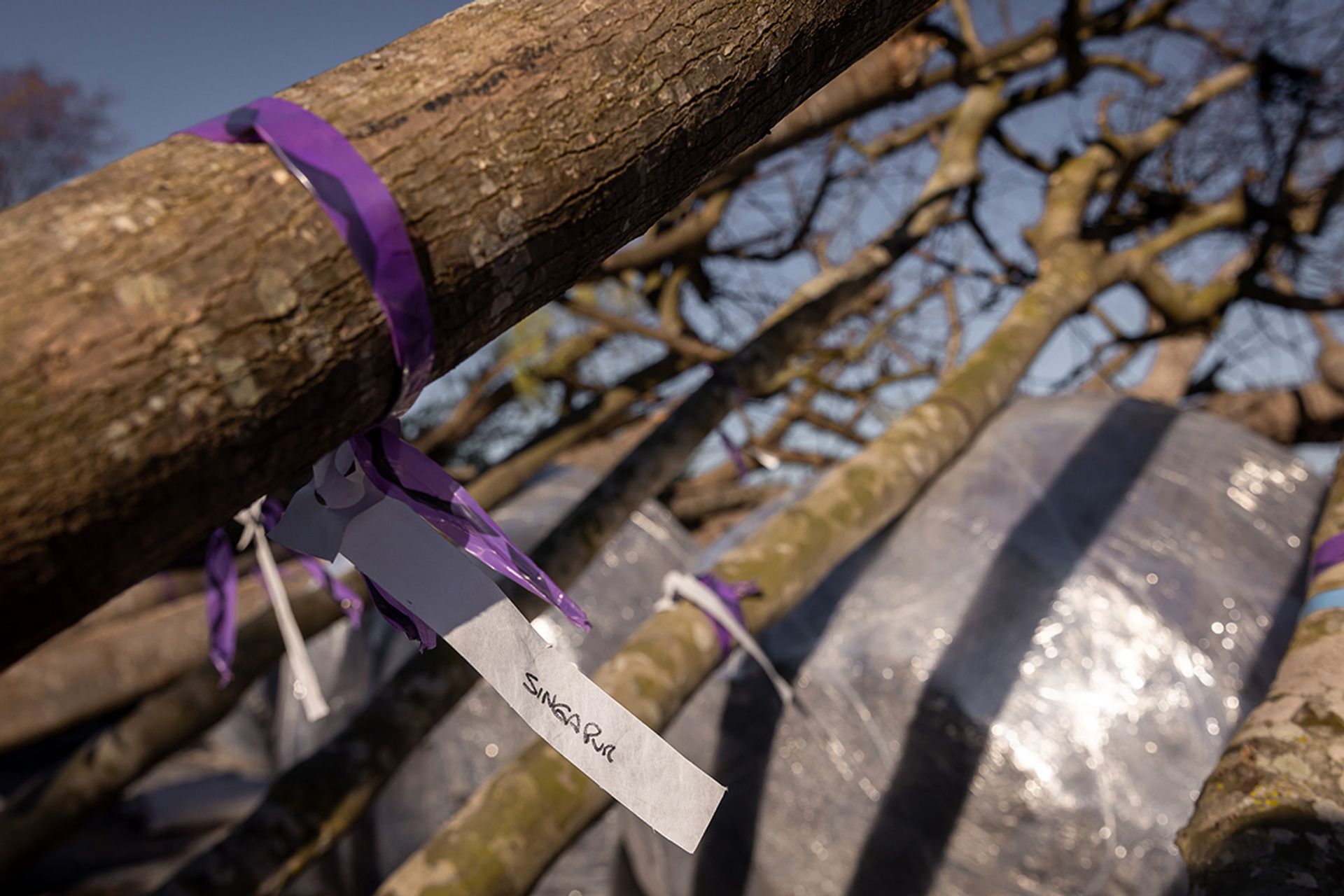
While Ms Xue has transplanted trees in Singapore before, some practices by the Lobos Nursery staff are new to her - like the addition of hydrating gel to the root balls. These could be applied back home in the future, she says.
Holding a cloth-filled bag that is used to cushion the trees in the container, she jokes that the bag can also be used as a pillow – a reflection of the level of care given to the plants.
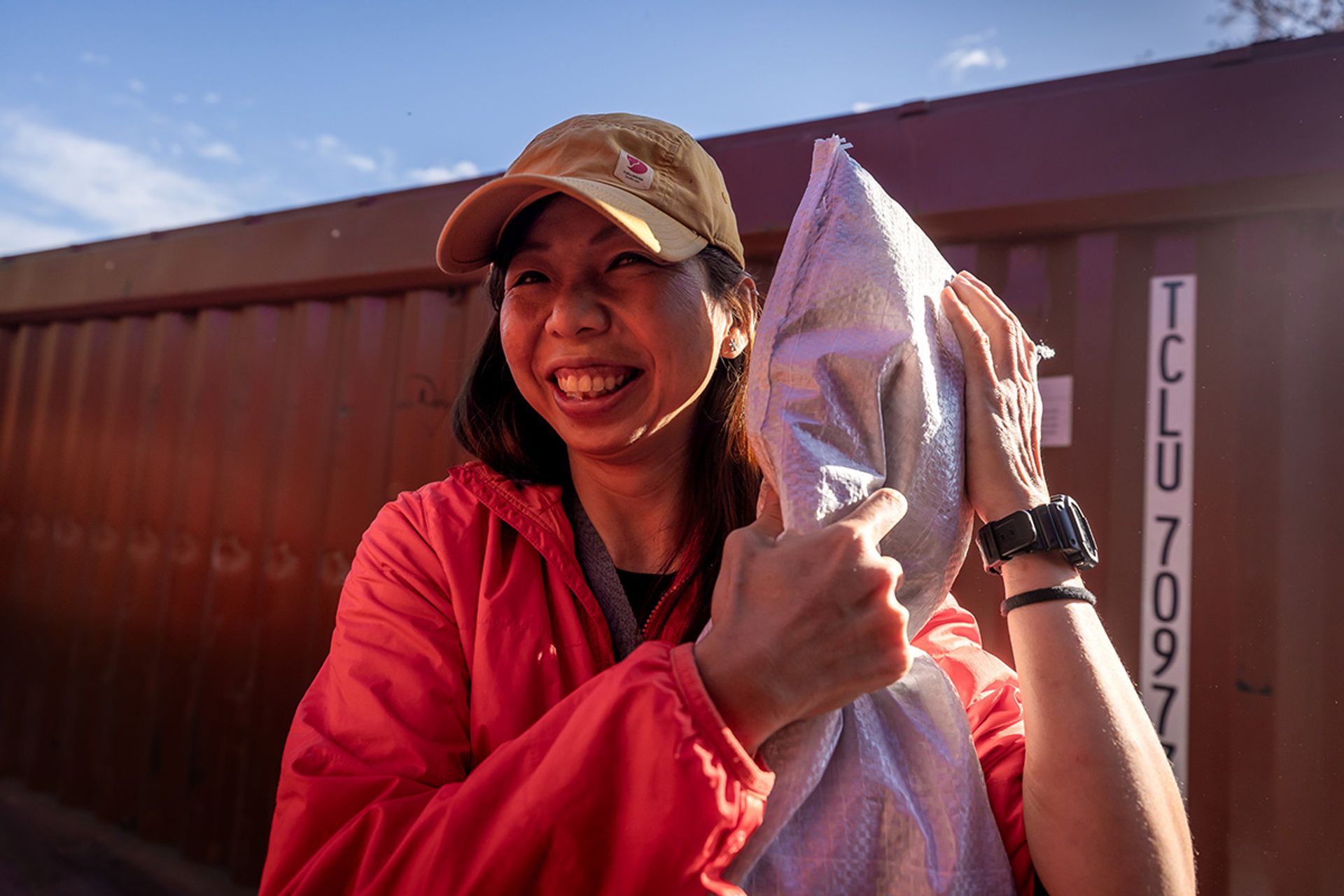
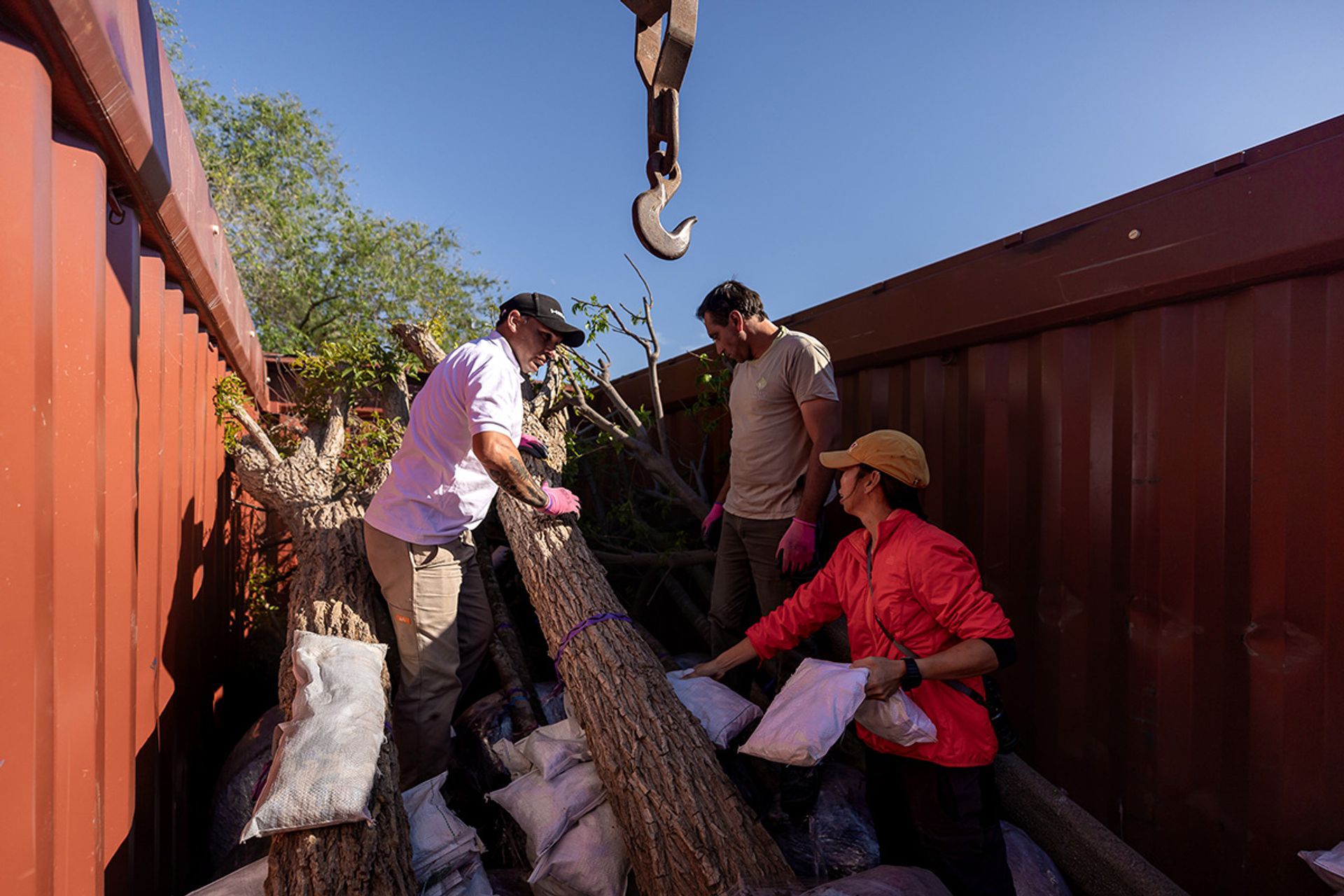
Historically, besides importing plants, new species were also introduced to Singapore through plant exchanges with overseas institutions.
As part of her research for this trip, Ms Xue looked into the Singapore Inward Register – a record of plants that the country has received from overseas – for past exchanges with Latin American organisations.
The register showed that the Singapore Botanic Gardens had in 1981 received plants from the Wilson Botanical Garden in Costa Rica.
WILSON BOTANICAL GARDEN
This prompted the Gardens by the Bay team to visit the Costa Rican garden in June.
During that visit, staff from the Wilson Botanical Garden dug out their own inward register from a small, cramped herbarium to look for records that might have mentioned Singapore.
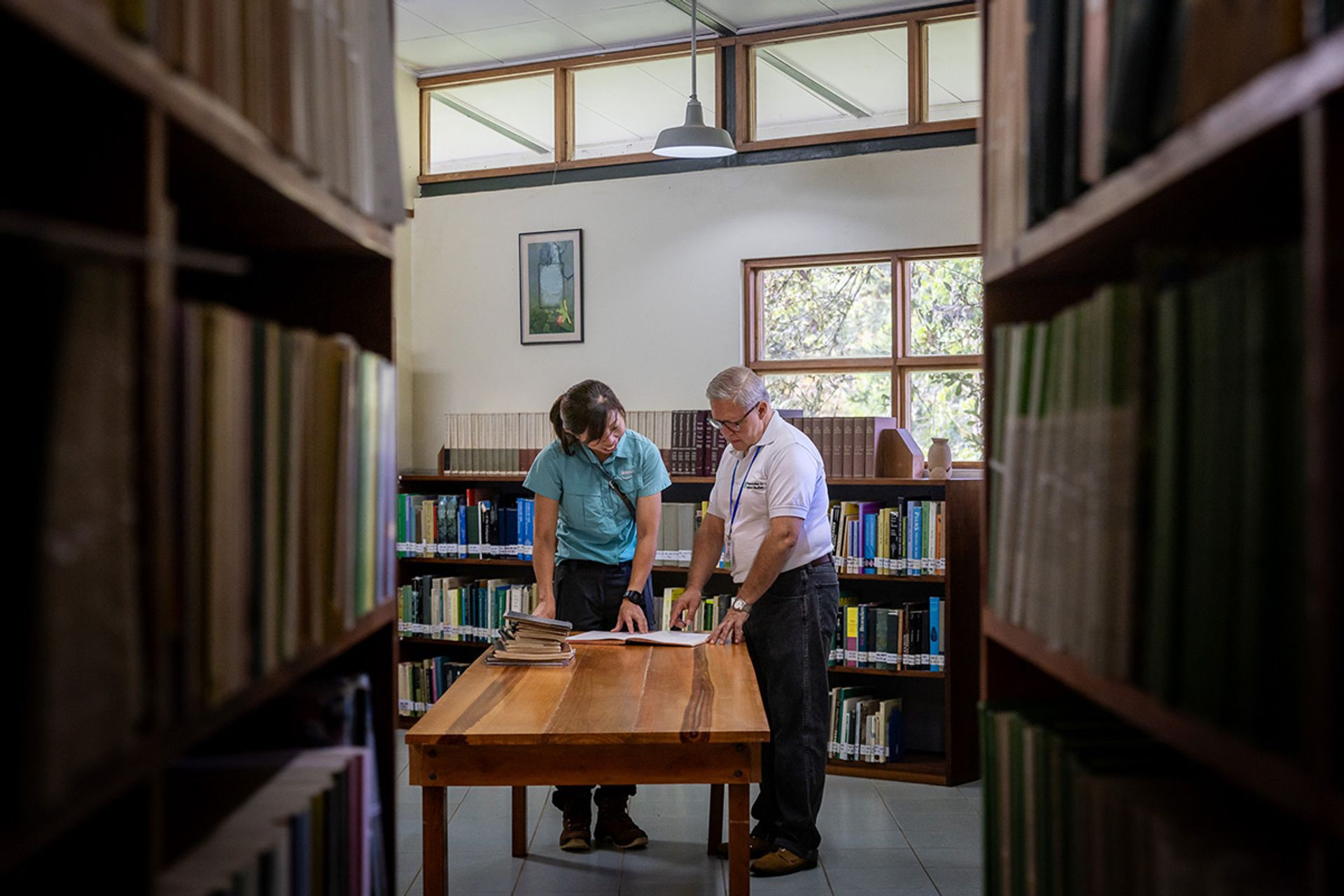
Much to Ms Xue’s excitement, they found records that the Wilson Botanical Garden had received several palm species from the Singapore Botanic Gardens, in documents that even staff at the Costa Rican institution were surprised to see.
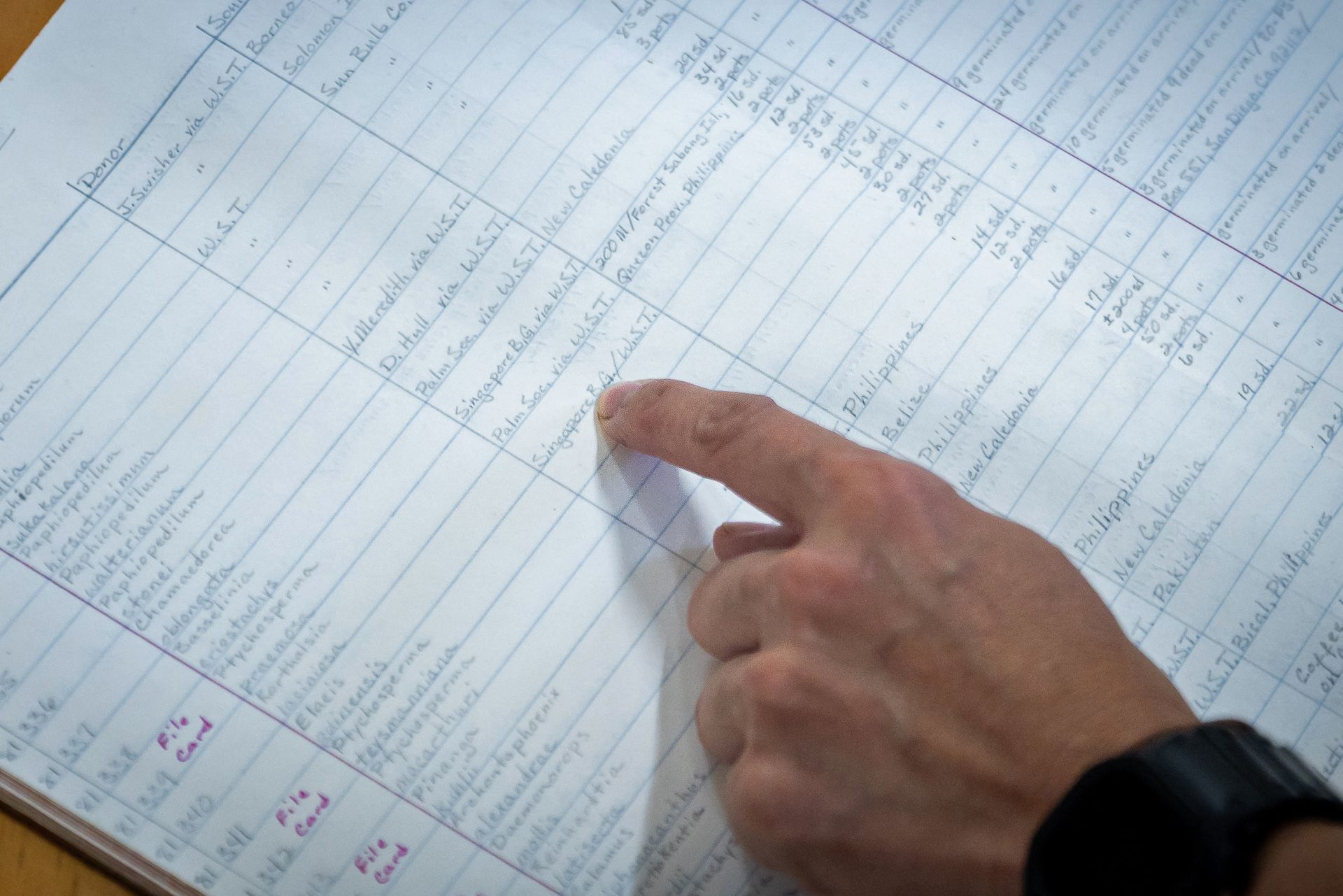
While plant exchanges between botanical gardens are nothing new, Ms Xue says she did not expect to find records of exchanges that happened four decades ago.
“It was astounding to know that we have records, especially from that period of time, when we know that horticulturalists were actively trying to increase the variety of plants in Singapore.”
Reflecting her experience of growing up in Singapore, Ms Xue says that prior to doing research for the trips to Latin America, she had not known that the presence of species in Singapore such as the Tabebuia rosea – her favourite tree because its distinctive flowers could be seen from her childhood home – was attributable to the efforts of her predecessors.
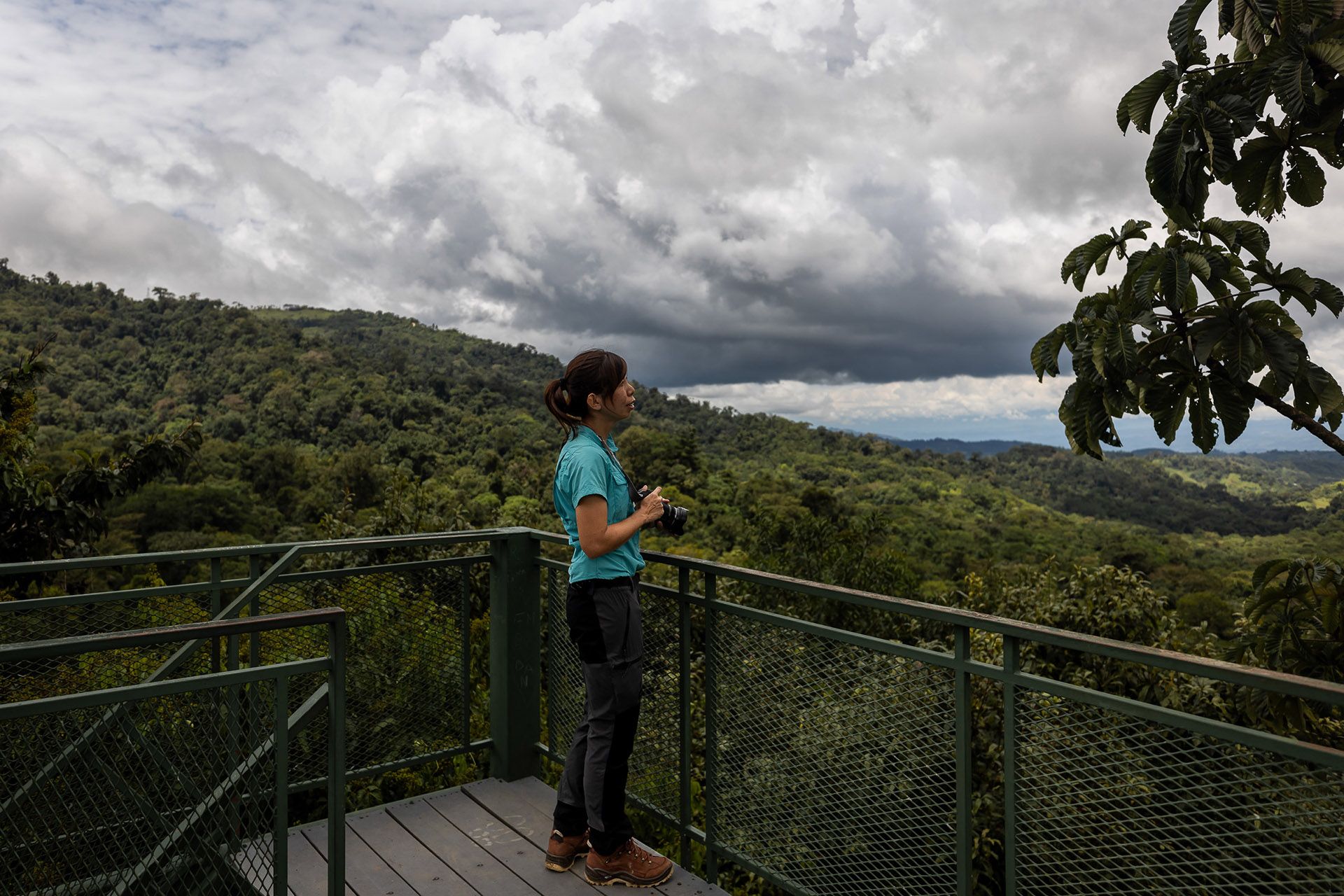
“I see the trees blooming and I really appreciate it, but I did not know that all these blooming trees came from sourcing trips,” she says. “What I took for granted as a very normal tree in Singapore’s parks and streetscapes was actually the result of pioneer horticulturalists’ expeditions.”
In the same way, she hopes the plants she and her colleagues have chosen for Bay East Garden will resonate with Singaporeans and delight them when the garden opens in 2027.